How to soothe a sinus headache. 10 Effective Home Remedies for Sinus Pressure Relief: Expert Guide
How to alleviate sinus pressure using natural methods. Which home remedies are most effective for sinus headaches. When to seek medical attention for sinus pain. How to differentiate between sinus infection and COVID-19 symptoms.
Understanding Sinus Pressure and Its Causes
Sinus pressure occurs when the air-filled cavities around your nose, cheeks, and eyes become blocked or inflamed. This can lead to discomfort, pain, and a range of other symptoms. Common causes of sinus pressure include:
- Viral infections (such as the common cold)
- Allergies
- Bacterial infections
- Environmental irritants
- Structural issues in the nasal passages
Is sinus pressure always a sign of infection? Not necessarily. While infections can cause sinus pressure, other factors like allergies or changes in air pressure can also contribute to this discomfort.
Top 10 Home Remedies for Sinus Pressure Relief
Fortunately, there are several effective home remedies that can help alleviate sinus pressure and promote faster recovery. Let’s explore these natural solutions in detail:

1. Nasal Irrigation with a Neti Pot
Nasal irrigation using a Neti pot is a time-tested method for sinus relief. This technique involves flushing your nasal passages with a saline solution, helping to clear out mucus and allergens.
How do you use a Neti pot safely? Follow these steps:
- Fill the pot with distilled or sterile water
- Add the appropriate amount of salt
- Tilt your head sideways over a sink
- Pour the solution into one nostril, allowing it to drain from the other
- Repeat on the other side
Remember to use only distilled or sterile water to avoid introducing harmful microorganisms into your nasal passages.
2. Saline Nasal Sprays
Over-the-counter saline nasal sprays can provide quick relief from sinus pressure. These sprays help moisturize the nasal passages, reduce inflammation, and thin mucus for easier drainage.
Can you use saline nasal sprays long-term? Unlike medicated nasal sprays, saline sprays are generally safe for long-term use as they don’t contain active ingredients that can cause rebound congestion.

3. Stay Hydrated
Proper hydration is crucial for managing sinus pressure. Drinking plenty of fluids helps thin mucus, making it easier to expel. Aim for at least 8 glasses of water per day, and consider incorporating hydrating foods into your diet.
Which beverages should you avoid when dealing with sinus pressure? Steer clear of caffeinated and alcoholic drinks, as these can contribute to dehydration and potentially worsen your symptoms.
4. Get Adequate Rest
Rest is essential for recovery from sinus-related issues. Your body needs energy to fight off infections and reduce inflammation. Ensure you’re getting enough sleep each night, and consider taking brief naps during the day if needed.
How can you improve your sleep quality when dealing with sinus pressure? Try elevating your head with an extra pillow to promote better drainage and ease breathing.
5. Steam Inhalation
Steam inhalation is a simple yet effective way to relieve sinus pressure. The warm, moist air can help loosen mucus and reduce inflammation in your nasal passages.

What’s the best way to perform steam inhalation?
- Boil water in a pot or kettle
- Carefully pour the hot water into a bowl
- Drape a towel over your head and lean over the bowl
- Inhale the steam for 5-10 minutes
- Repeat 2-4 times a day as needed
For added benefits, consider adding a few drops of eucalyptus or peppermint essential oil to the water.
6. Spicy Foods
Incorporating spicy foods into your diet can help clear your nasal passages. Capsaicin, the compound responsible for the heat in spicy foods, can help reduce inflammation and promote mucus drainage.
Which spicy foods are most effective for sinus relief?
- Hot peppers (such as jalapeños or habaneros)
- Horseradish
- Wasabi
- Ginger
- Garlic
Remember to start with small amounts and gradually increase your spice intake to avoid digestive discomfort.
The Role of Humidity in Sinus Health
Maintaining proper humidity levels in your environment can significantly impact sinus health. Dry air can irritate the nasal passages and exacerbate sinus symptoms, while excessive moisture can promote mold growth and trigger allergies.

How can you achieve optimal humidity for sinus health?
- Use a humidifier in dry environments, aiming for 30-50% humidity
- Avoid over-humidifying, which can promote mold growth
- Clean your humidifier regularly to prevent bacterial growth
- Consider using a hygrometer to monitor humidity levels in your home
7. Over-the-Counter Medications
Various over-the-counter medications can provide relief from sinus pressure and related symptoms. These include:
- Decongestants (such as pseudoephedrine)
- Antihistamines (for allergy-related sinus issues)
- Pain relievers (like acetaminophen or ibuprofen)
- Combination cold and sinus medications
Are OTC medications safe for everyone? It’s important to consult with a healthcare provider before taking any new medications, especially if you have underlying health conditions or are taking other medicines. Never give decongestants or cold medicines to children under 4 years old without medical supervision.
8. Boost Your Vitamin C Intake
Vitamin C is known for its immune-boosting properties and can help fight off infections that may be causing your sinus pressure. While vitamin C supplements are available, it’s often best to obtain this nutrient from natural food sources.
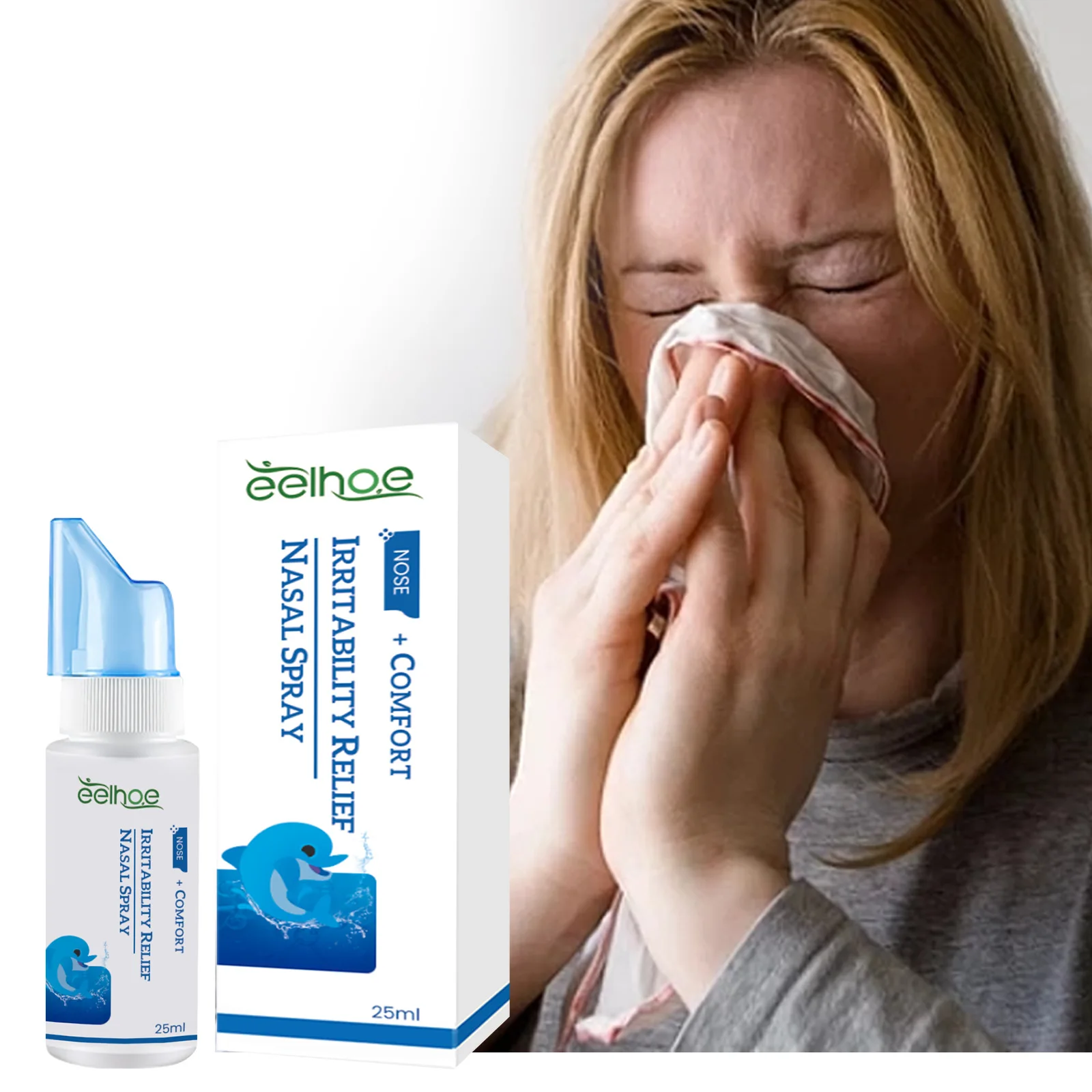
Which foods are high in vitamin C?
- Citrus fruits (oranges, grapefruits, lemons)
- Berries (strawberries, blueberries, raspberries)
- Kiwi fruit
- Bell peppers
- Broccoli
- Brussels sprouts
Incorporating these foods into your diet can help support your immune system and potentially reduce the duration of sinus-related symptoms.
Identifying and Managing Sinus Triggers
Understanding what triggers your sinus issues is crucial for prevention and management. Common triggers include:
- Seasonal allergies
- Environmental pollutants
- Changes in weather or air pressure
- Certain foods or beverages
- Stress
How can you identify your personal sinus triggers? Keep a journal noting when your symptoms occur and what environmental factors or activities preceded them. This can help you recognize patterns and take preventive measures.
9. Preventive Measures
Taking proactive steps to prevent sinus issues can significantly reduce their frequency and severity. Consider the following preventive strategies:
- Start taking antihistamines before allergy season begins
- Use air purifiers in your home to reduce airborne allergens
- Practice good hand hygiene to prevent viral infections
- Avoid known allergens or irritants when possible
- Maintain a healthy lifestyle with regular exercise and a balanced diet
Is it possible to completely prevent sinus issues? While it may not be possible to eliminate all sinus problems, these preventive measures can significantly reduce their frequency and severity.

10. Nasal Suction for Children
For young children who can’t use many of the remedies mentioned above, nasal suction can be an effective way to relieve congestion. This method involves using a bulb syringe or nasal aspirator to remove excess mucus from the nasal passages.
How do you perform nasal suction safely?
- Use saline drops to loosen the mucus
- Gently insert the tip of the bulb syringe or aspirator into one nostril
- Squeeze the bulb to create suction and remove mucus
- Clean the device thoroughly after each use
Remember that nasal suction should be performed gently to avoid irritating the delicate nasal tissues.
Differentiating Between Sinus Infections and COVID-19
Given the ongoing COVID-19 pandemic, it’s crucial to distinguish between sinus infection symptoms and those of COVID-19. While there can be some overlap, certain symptoms are more indicative of one condition over the other.
What are the key differences between sinus infection and COVID-19 symptoms?
- Sinus infections typically cause localized pain and pressure in the face
- COVID-19 often includes systemic symptoms like body aches and fatigue
- Loss of taste or smell is more commonly associated with COVID-19
- Shortness of breath is a key COVID-19 symptom not typically seen in sinus infections
If you’re unsure about your symptoms or have concerns about possible COVID-19 exposure, it’s best to consult with a healthcare provider for proper evaluation and guidance.

When to Seek Medical Attention for Sinus Issues
While many sinus problems can be managed at home, there are situations where professional medical care is necessary. It’s important to recognize these scenarios to ensure proper treatment and prevent complications.
When should you see a doctor for sinus-related symptoms?
- Symptoms persist for more than 10 days without improvement
- You experience severe pain or swelling around your eyes or forehead
- You have a high fever (above 101°F or 38.3°C) that doesn’t respond to over-the-counter medications
- You notice changes in your vision
- You develop symptoms of a severe infection, such as confusion or neck stiffness
If you experience frequent or recurring sinus infections, it may be beneficial to consult an ear, nose, and throat (ENT) specialist for a comprehensive evaluation and personalized treatment plan.
Exploring Long-Term Solutions for Chronic Sinus Issues
For individuals who suffer from chronic or recurrent sinus problems, exploring long-term solutions may be necessary. These can include:
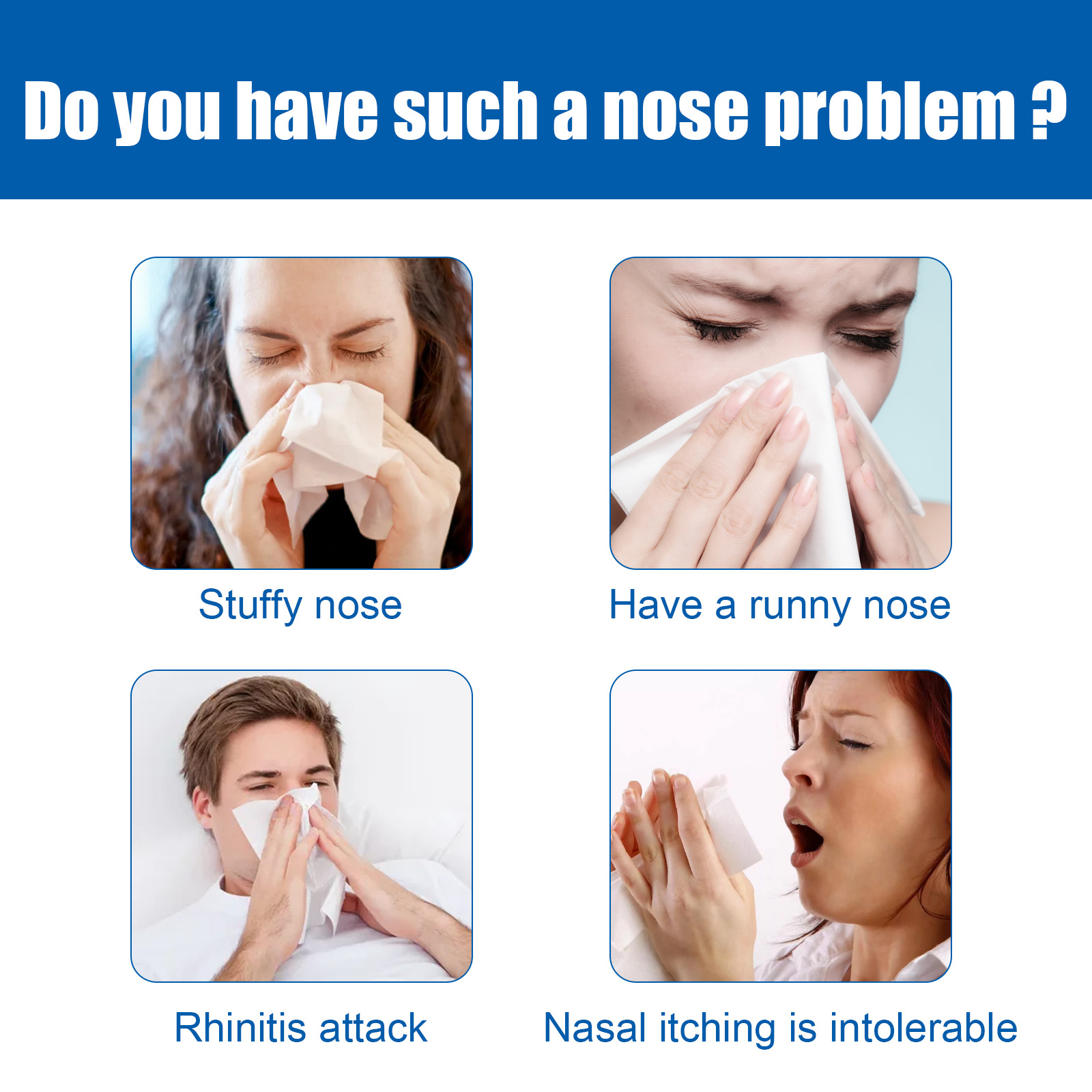
- Allergy testing and immunotherapy
- Evaluation for structural abnormalities in the nasal passages
- Consideration of minimally invasive procedures to improve sinus drainage
- Development of a personalized management plan with an ENT specialist
Can chronic sinus issues be completely cured? While complete cure may not always be possible, many people find significant relief and improved quality of life through proper management and treatment of their chronic sinus conditions.
By implementing these home remedies and understanding when to seek professional care, you can effectively manage sinus pressure and related symptoms. Remember that everyone’s experience with sinus issues is unique, so it may take some trial and error to find the most effective combination of treatments for your specific situation. With patience and persistence, you can find relief and improve your overall sinus health.
How to Relieve Sinus Pressure with 10 Home Remedies
HEAL
- Know what can trigger a cold and sinus infection and be prepared. Start taking vitamin C and antihistamine prior to allergy season or use a Neti pot right away at the onset of a cold.
The pressure is building in your forehead, your nose is running, and you just don’t feel good. You suspect that you may have a sinus infection, or sinusitis. Most sinus infections will resolve themselves in seven to 10 days, just by taking care of yourself at home.
What to do for sinus pressure and pain at home
Here are the top 10 at-home
treatments to help ease your sinus pain and inflammation to get rid of your sinus infection faster.
- Flush. Use a Neti pot, a therapy that uses a salt and water solution, to flush your nasal passages. Nasal irrigation using the Neti pot has been a tried-and-true sinus treatment method for centuries.
 I have patients who swear by Neti pots and use them daily or weekly to keep their sinuses flowing well. Remember to
I have patients who swear by Neti pots and use them daily or weekly to keep their sinuses flowing well. Remember to
use distilled water only. - Spray. Use an over-the-counter nasal decongestant spray that contains salt water to help keep your nasal passages moist, unblock congestion and treat inflammation. Some sprays, like Afrin®, can only be used for a maximum of three days. If you exceed three days, you will get “rebound” or worse nasal
congestion. Other nasal sprays, like fluticasone, are more effective the longer you use them. - Hydrate. Drink a lot of fluids—water and/or juice—to help thin your mucus. Avoid caffeinated or alcoholic beverages, which can cause dehydration.
- Rest. Get plenty of rest to help your body fight infection and speed up recovery. While you sleep, prop yourself up with a couple of pillows. Staying elevated can help you breathe more comfortably.
- Steam.
 Breathe in steam from a pot or bowl of warm (not too hot!) water or take a hot shower. You also can place a warm, wet towel on your face, followed by a cool towel. to help ease sinus pain and open your nasal passages.
Breathe in steam from a pot or bowl of warm (not too hot!) water or take a hot shower. You also can place a warm, wet towel on your face, followed by a cool towel. to help ease sinus pain and open your nasal passages. - Spice. Eat spicy foods to help clear your nasal passages. Add hot peppers, hot sauce, horseradish or wasabi to your meal.
- Add humidity. Use a humidifier or vaporizer in your room while you sleep to add moisture to the air and help reduce congestion. Dry air, tobacco smoke and chlorinated water can irritate the mucus membranes in your nose and create an environment ripe for sinus infection.
- OTC medication. Take over-the-counter decongestants, antihistamines (if allergies are the culprit) and pain relievers to reduce sinus pain and pressure. Be sure to check with your doctor first if you have any health issues or take other medicines. Never give decongestants or any
over-the-counter cold medicine to children under age 4. Nasal suction is the best form of “decongesting” for young children. This also reduces post-nasal drip and overall lung irritation.
Nasal suction is the best form of “decongesting” for young children. This also reduces post-nasal drip and overall lung irritation. - C is key. Up your intake of vitamin C. This may help fight off sinus infection faster, reduce sinus inflammation and relieve the duration of a sinus infection or cold symptoms.
- Know your triggers. Know what can trigger a cold or sinus infection and be prepared. Start taking an antihistamine prior to allergy season or use a Neti pot right away at the onset of a cold.
Sinus infection vs. COVID-19 symptoms
Some sinus infection and COVID-19 symptoms may overlap. Both illnesses can cause a fever, headaches, nasal congestion, fatigue or a sore throat. Symptoms unique to COVID-19 include body aches, nausea, shortness of breath and vomiting. Learn the difference between the cold, flu and COVID-19 based on your symptoms.
When to see a doctor for sinus pain
If your sinus symptoms are not getting better with at-home treatments, and if your sinus symptoms last longer than seven to 10 days, you should see a doctor for treatment. Allina Health has many convenient care options for care, from online visits to walk-in care, to help you get better fast.
Allina Health has many convenient care options for care, from online visits to walk-in care, to help you get better fast.
If you have frequent or reoccurring sinus infections, you may want to see an ear, nose and throat (ENT, otolaryngologist) for your treatment options.
MORE LIKE THIS
Remedies for Sinus Headaches
Have questions? Use our contact form to get in touch with us today! Contact Us
Sinus headaches are caused by blocked sinuses, giving you pain and pressure around your sinuses, including between your eyes and above your nose. The pain can get worse when you move and the headache usually comes with other symptoms too, such as a stuffy nose or a sore throat. Experiencing a sinus headache can be tough, but there are remedies that can help you to deal with the problem.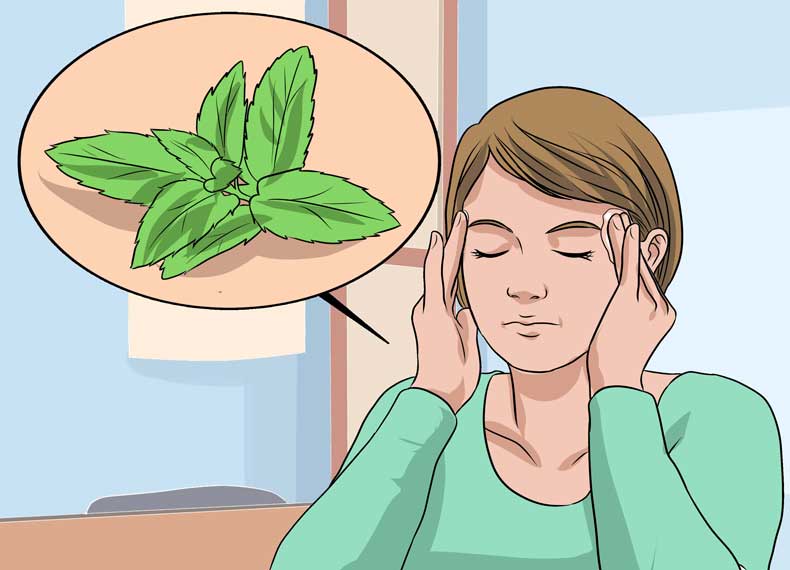
Dealing with the pain you’re experiencing is important, but it can also be necessary to consider treatments for the underlying cause of your sinus headaches too. An ear, nose and throat (ENT) doctor might prescribe certain medications or suggest treatments that you can try at home.
Over the counter (OTC) painkillers
Taking painkillers might not tackle the cause of your sinus headache, but it will give you temporary pain relief. Over-the-counter painkillers are an easy solution because they are readily available and effective. Medications such as acetaminophen and ibuprofen can give you the pain relief that you need. Make sure to use them according to the label so that you can ensure you’re using them safely.
Decongestants
Decongestants help by opening up your blocked sinuses to help relieve congestion. However, it’s important to be cautious when using them. If you use nasal decongestants for more than three days in a row, you could actually make your congestion worse. Oral decongestants should only be taken for a maximum of seven days.
Oral decongestants should only be taken for a maximum of seven days.
Decongestants are also available over the counter, so you don’t need a prescription. If you’re also taking painkillers, check the ingredients on the decongestants. Many decongestants also contain painkillers, so you need to be careful not to take too much by doubling up on medication.
Nasal steroid sprays
A nasal steroid spray is a treatment that your doctor might prescribe to you for particularly bad cases of blocked sinuses and sinus headaches. They are stronger medications that can help to reduce congestion and pain.
Antihistamines
Sometimes congestion can be caused by allergies, from seasonal allergies to environmental allergies. When this is the case, your doctor might recommend antihistamines, which can help with your sinus problems by treating the allergies.
Solutions for dry air
Dry air can irritate your sinuses, so ensuring it isn’t too dry can be helpful.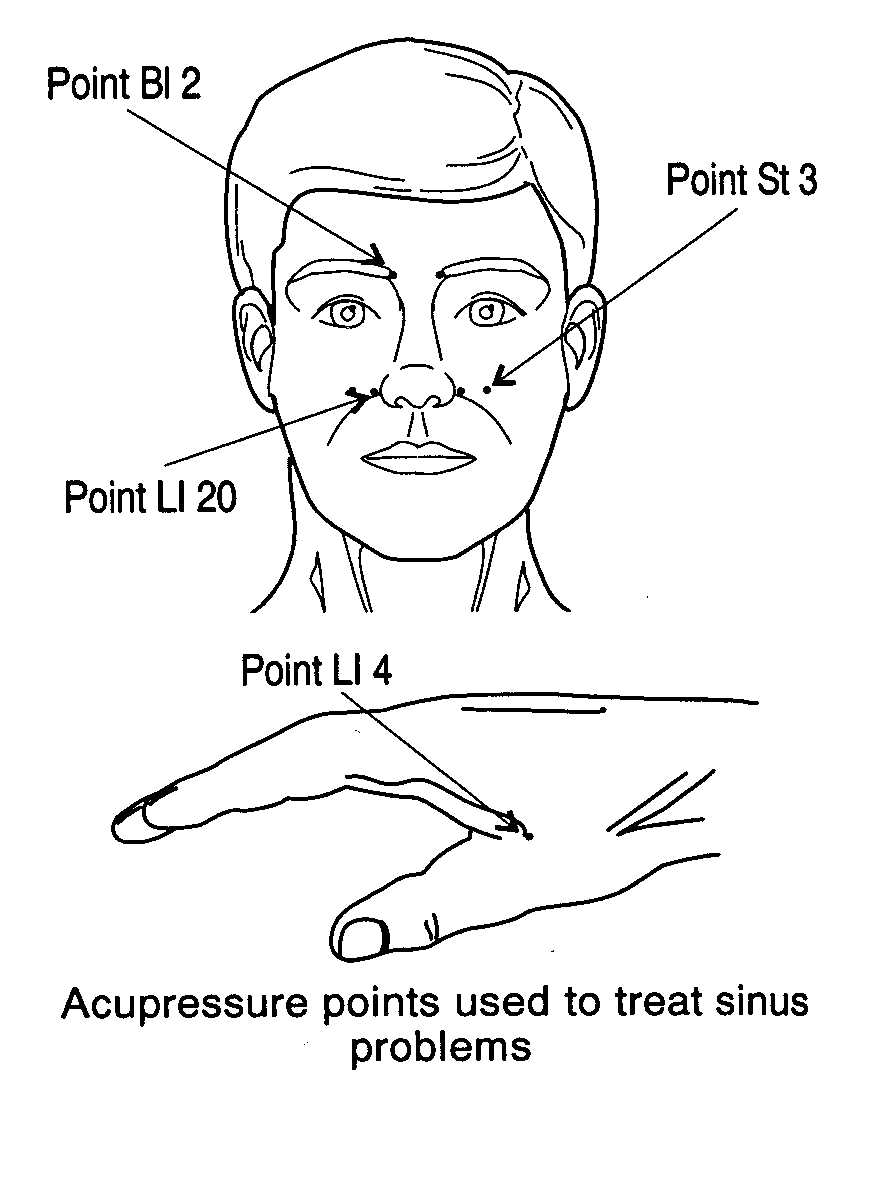 You can use a humidifier or vaporizer to increase the humidity in your home. Other ways to benefit from using water include soaking a towel in warm water and holding it over your face for a few minutes. You can also use a saline solution nasal spray for the same purpose.
You can use a humidifier or vaporizer to increase the humidity in your home. Other ways to benefit from using water include soaking a towel in warm water and holding it over your face for a few minutes. You can also use a saline solution nasal spray for the same purpose.
Salt water
Salt water can be used to flush out your sinuses and help to relieve sinus headaches. You can use a bulb syringe or a neti pot to carefully flush out your sinuses with salt water. It works by moistening and clearing out mucus, which should help to relieve the pressure and your headache. You should use distilled, sterile or boiled and then cooled water and make sure to wash out your neti pot or syringe after each use. A saline nasal spray does a similar job.
Avoid making symptoms worse
Various things can irritate your nasal passages, such as perfumes and cigarette smoke. Avoid the things that could make your symptoms worse if you want to deal with your sinus headache more quickly.
What to do when home remedies aren’t working
When you have a sinus headache, trying some treatments at home should be your first step. However, if you’ve tried a few things and nothing is helping, seeing a doctor can help you to get the right treatment and perhaps identify an underlying cause. You should also see a doctor if you have a fever, if there is pain or swelling of your face or eyes, redness around your eyes, cheeks, a severe headache, stiff neck or confusion.
After other treatments have been exhausted and your sinus problems are recurring, surgery might be suggested as an option for sinus headaches and blocked sinuses. This is something that you might discuss with your ENT to determine whether it’s the right choice for you and how it can help, as well as some of the risks that surgery can have. Before discussing surgery, it’s important to try other remedies to find out if any of them work.
If sinus headaches are a regular problem for you, Mountain Ear, Nose & Throat Associates can help. Contact us today at Sylva 828-586-7474, Franklin 828-524-5599, Murphy 828-835-1014 or New Asheville 828-458-8100 to schedule an appointment or learn more.
Contact us today at Sylva 828-586-7474, Franklin 828-524-5599, Murphy 828-835-1014 or New Asheville 828-458-8100 to schedule an appointment or learn more.
Five Ways to Relieve Sinus Pressure
But those 7-10 days can make you miserable.
One of the most annoying symptoms is the sinus pressure around the eyes, head and cheeks. Fortunately, there are several home remedies and medications that can help provide relief.
REQUEST APPOINTMENT
What causes a sinus infection?
A sinus infection can be caused by several different things including:
• Seasonal allergies
• A deviated septum: The septum is the part of the nose that divides it into right and left nostrils. Some people have crooked or deviated septums, which makes them more susceptible to sinus infections.
• Nasal polyps
• Respiratory tract infections
Sinus infections may be acute (lasting for a shorter period of time) or chronic (recurring for several months).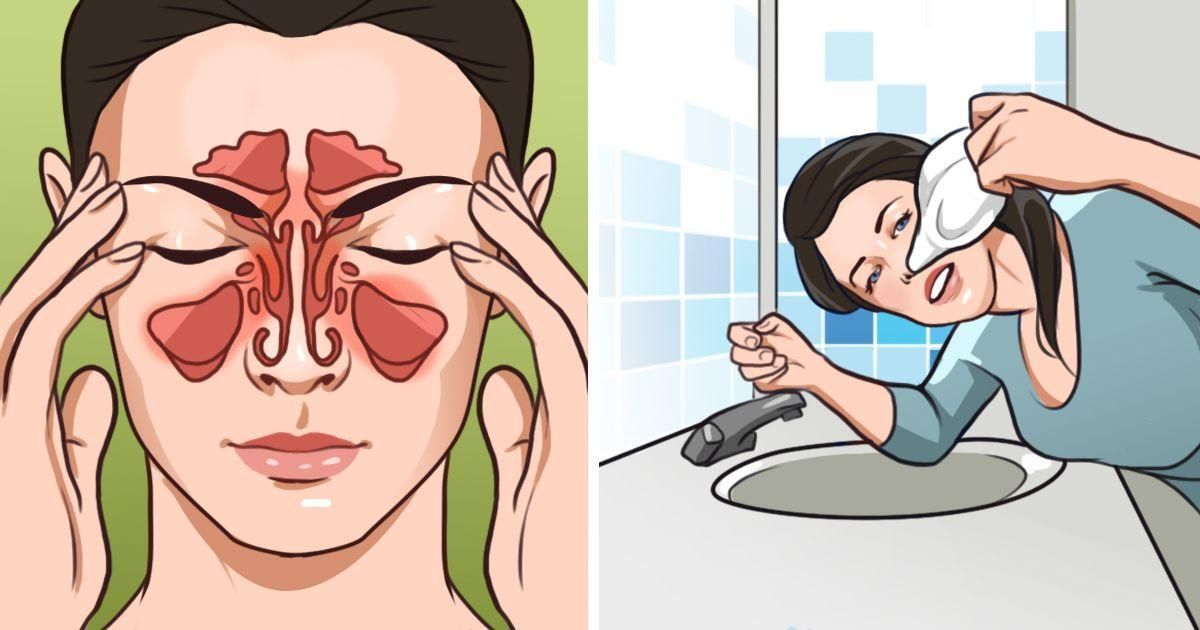
What are the symptoms of a sinus infection?
Common signs of a sinus infection include:
• Facial pain
• Headaches
• Congestion and a runny nose
• Sore throat
• Post nasal drip
• Coughing
• Exhaustion
• Bad breath
What causes sinus pressure?
The throbbing pain you feel when bending over when you have a sinus infection is caused by a buildup of fluid around the sinus cavities. Inflammation blocks the narrow sinus passages, making it difficult for fluid to drain. As a result, bacteria or viruses develop and cause an infection.
What are five ways to relieve sinus pressure?
Some of the most effective home remedies include:
1. A WARM COMPRESS
Putting a warm compress on your forehead and over your nose helps open the sinus passages to reduce the swelling.
2. SALINE NOSE SPRAY
A nose spray or nasal irrigation helps wash away germs and allergens that are causing swelling. The saline acts as a humidifier and helps sinus mucus move so it can drain.
3. STEAM FROM A HOT SHOWER OR A BOWL OF HOT WATER
By inhaling steam, you can reduce swelling, which in turn will alleviate pressure.
4. A HUMIDIFIER OR VAPORIZER
Keeping your environment moist can help your sinus passages open. Be sure to keep your humidifier or vaporizer clean.
5. OVER-THE-COUNTER MEDICATIONS
A variety of OTC medications can help relieve the discomfort associated with sinus pressure, particularly acetaminophen, ibuprofen or naproxen; however, be sure you check to ensure that they won’t react with any prescription medicines or natural remedies that you may be taking. Be sure to follow the dosing instructions carefully.
While decongestants like pseudoephedrine and phenylephrine may help with congestion, you should always check with one of our providers or your pharmacist to be sure these are safe to take with any medications or herbal remedies you are currently taking.
It’s important to realize that certain medications like Afrin may cause immediate relief, but can actually cause “rebound” stuffiness, so it’s best to limit your use of this OTC medication.
What is the long-term relief for sinus infections?
Sinus infections are primarily caused by allergies. The most common allergens are pollen, dust mites and pet dander. Those with repeated sinus infections may have chronic sinusitis, which means long-term solutions may be a better option.
Immunotherapy can help. These allergy shots enable your body to decrease sensitivity to common allergens. The Raleigh sinus doctors at Raleigh Medical Group specialize in helping patients with chronic allergy and sinus problems. While immunotherapy is effective, the treatment can take as long as one year to achieve noticeable results and maintenance treatment will likely be needed.
To find out if you’re a candidate for immunotherapy, schedule an appointment with one of our internal medicine doctors. We welcome the opportunity to serve you.
Is It a Sinus Headache?
Is It a Sinus Headache? | TYLENOL®
Skip to main content
When you have a headache, all you want is to get rid of it. And when you know where your pain is coming from, you’ll have a better idea about how to treat it.
And when you know where your pain is coming from, you’ll have a better idea about how to treat it.
Sinus headaches are usually characterized by a throbbing pain in your forehead or behind your eyes that may increase when you lean forward or lie down.
You may also experience pressure between your eyes or tenderness in your cheekbones, a sore throat, runny nose or cough.
Why sinus headaches happen:
Nasal passages can become swollen due to environmental irritants, allergies or even a cold, which can create sinus congestion and pain.
What Next?
First, find temporary relief with an over-the-counter pain reliever with a decongestant, such as TYLENOL® Sinus Congestion and Pain. You may also find comfort by keeping your nasal passages moist using a vaporizer or humidifier.
Relieve sinus headaches from pain and congestion.
Learn more about safe acetaminophen usage.
Link your social account
{* loginWidget *}
Or use your traditional account
{* #userInformationForm *}
Email Address
{* traditionalSignIn_emailAddress *}
Password
{* traditionalSignIn_password *}
{* traditionalSignIn_signInButton *}
{* /userInformationForm *}
Welcome back, {* welcomeName *}!
{* loginWidget *}
Welcome back!
{* #userInformationForm *}
{* traditionalSignIn_emailAddress *}
{* traditionalSignIn_password *}
{* traditionalSignIn_signInButton *}
{* /userInformationForm *}
{* #socialRegistrationForm *}
{* socialRegistration_firstName *}
{* socialRegistration_lastName *}
Your first name and last initial will be displayed publicly to other users when you write a review or blog post (ex. ”John S.”).
{* socialRegistration_gender *}
{* socialRegistration_zipcode *}
{* socialRegistration_emailAddress *}
Will be used as your user name
{% customQuestions %}
{% customOptin %}
Registration permits you to participate in all areas of this site.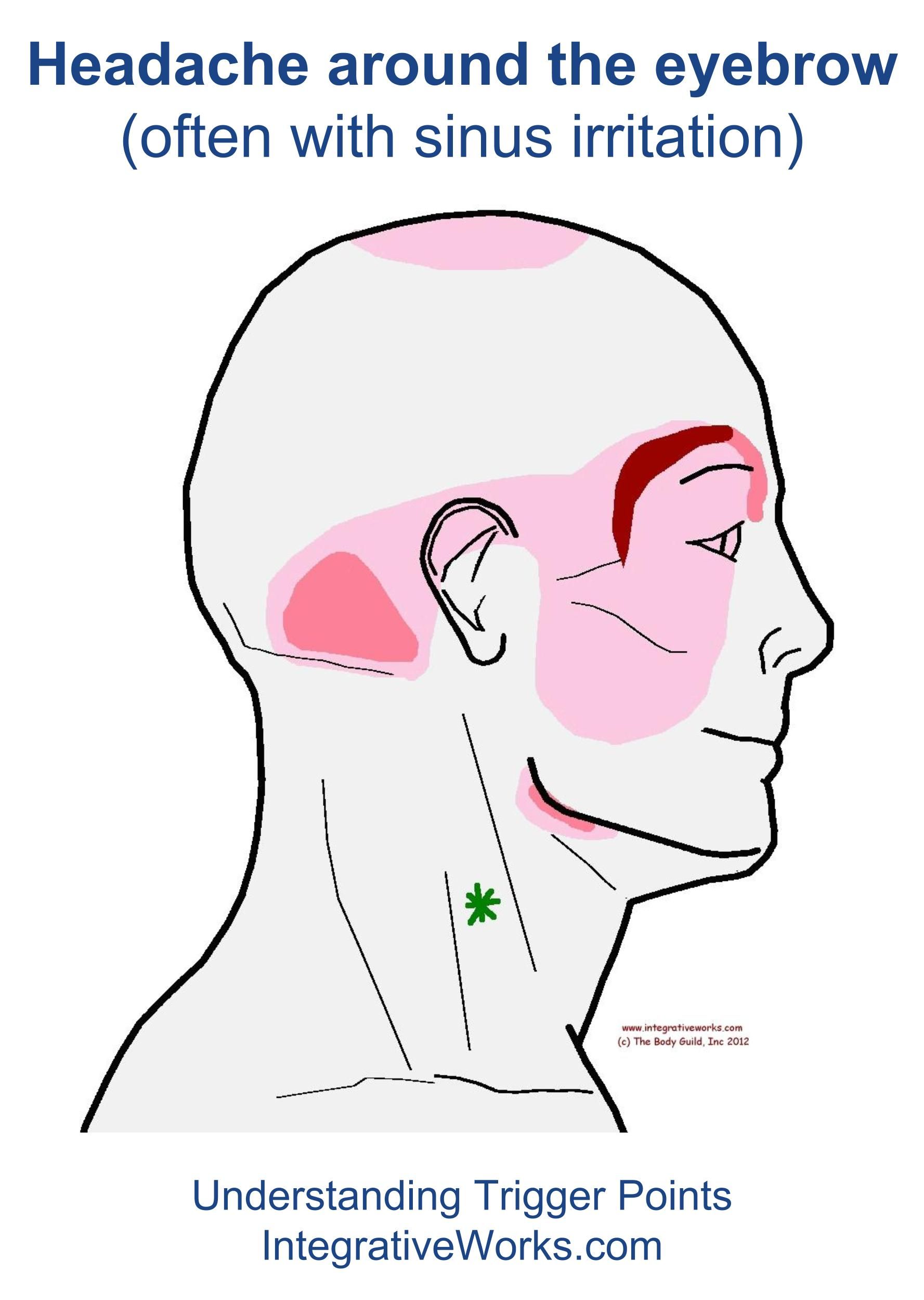 By submitting your information above, you agree that the information you provide will be governed by our site’s Privacy Policy.
By submitting your information above, you agree that the information you provide will be governed by our site’s Privacy Policy.
{* /socialRegistrationForm *}
Link an existing social account:
{* loginWidget *}
Or create an account by providing the information below.
{* #registrationForm *}
{* traditionalRegistration_firstName *}
{* traditionalRegistration_lastName *}
Your first name and last initial will be displayed publicly to other users when you write a review or blog post (ex. ”John S.”).
{* traditionalRegistration_gender *}
{* traditionalRegistration_zipcode *}
{* traditionalRegistration_emailAddress *}
Will be used as your user name
{* traditionalRegistration_password *}
{* traditionalRegistration_passwordConfirm *}
{% customQuestions %}
{% customOptin %}
Registration permits you to participate in all areas of this site. By submitting your information above, you agree that the information you provide will be governed by our site’s Privacy Policy.
{* /registrationForm *}
{* #requirementsPostLoginForm *}
{* firstName *}
{* lastName *}
{* gender *}
{* zipcode *}
By submitting your information above, you agree that the information you provide will be governed by our site’s Privacy Policy.
{* saveButton *}
{* /requirementsPostLoginForm *}
All fields required
{* #forgotPasswordForm *}
Email Address
{* traditionalSignIn_emailAddress *}
{* /forgotPasswordForm *}
Looks like you have an existing account with us. We have made some changes to our site and we need you to create a new password in order to login. Click send to recieve an email with instructions on how to create your new password.
{* #optinUserNewPasswordForm *}
{* optinUser_emailAddress *}
{* /optinUserNewPasswordForm *}
Please check your email for a reset link to continue the reset process.
{* mergeAccounts *}
{* #tradAuthenticateMergeForm *}
{* traditionalSignIn_emailAddress *}
{* mergePassword *}
{* /tradAuthenticateMergeForm *}
{* #privacyPolicyPostLoginForm *}
By clicking “Accept” below, you confirm that you have read, understand and accept our sites’s Privacy Policy
{* /privacyPolicyPostLoginForm *}
You do not meet the minimum age requirement to sign in to this site
Your account is deactivated.
Treatments for Sinus Headaches | Senior Lifestyle
As the weather changes, our sinuses can get irritated and inflamed, leading to painful sinus headaches. While a cure for sinus headaches might not ever be a reality, there are some simple measures you can take and popular treatments for sinus headaches that actually help.
If sinus headaches are dampening your day and keeping you up at night, try these sinus headache prevention and treatment tips:
1. Stay hydrated. The sinuses are spaces located above, below and between your eyes. When you’re dehydrated, they can dry up and prevent drainage, which leads to a sinus inflammation and a headache. Drinking plenty of fluids throughout the day can prevent and treat sinus headaches, so keep that water bottle filled up!
2. Eat spicy foods. Ever notice that your nose will start to run when you eat spicy foods? That might be embarrassing if you’re dining out, but it’s great for relieving your sinuses.
3. Enjoy a hot bowl of soup. When soup is steaming hot, it can loosen up your blocked sinuses and bring you some relief. Extra sinus relief points if the soup is spicy, too!
4. Use a hot/cold compress. Alternate pressing a hot and cold towel on your lower forehead and cheekbones. The contrasting temperatures can help move mucus through your sinuses.
5. Drink ginger tea. Ginger tea helps you hydrate and steam out the sinuses, but it also contains anti-inflammatory gingerol, which reduces inflammation in your mucus membranes.
6. Take a hot shower. We can’t always take a hot shower, but get the most out of your morning shower when you have a sinus headache. Breathe in the steam and allow it to clean out your sinuses as you clean up for the day.
7. Use a neti pot. The neti pot can be a little intimidating, but with some practice you’ll feel immediate benefits. Fill the neti pot with warm water and the saline solution, and pour the contents into one nostril as you tilt your head forward over the sink. After a few seconds, the solution will make its way through your sinuses and out the other nostril. It’s the most direct way to clear out your sinuses, and it can really help when you’ve had enough of your sinus headache.
After a few seconds, the solution will make its way through your sinuses and out the other nostril. It’s the most direct way to clear out your sinuses, and it can really help when you’ve had enough of your sinus headache.
While not usually a health emergency, sinus headaches can be a real pain. We hope these treatments for sinus headaches help you feel better so that you can get a good night’s sleep – and enjoy every day to the fullest!
Sinusitis (sinus infection) – NHS
Sinusitis is swelling of the sinuses, usually caused by an infection. It’s common and usually clears up on its own within 2 to 3 weeks. But medicines can help if it’s taking a long time to go away.
Check if you have sinusitis
Sinusitis is common after a cold or flu.
Symptoms of sinusitis include:
- pain, swelling and tenderness around your cheeks, eyes or forehead
- a blocked nose
- a reduced sense of smell
- green or yellow mucus from your nose
- a sinus headache
- a high temperature
- toothache
- bad breath
Signs of sinusitis in young children may also include irritability, difficulty feeding, and breathing through their mouth.
What are the sinuses?
The sinuses are small, empty spaces behind your cheekbones and forehead that connect to the inside of the nose.
Sinusitis causes the lining of the sinuses to swell up.
This stops mucus draining into your nose and throat properly, making you feel blocked up.
How you can treat sinusitis yourself
You can often treat mild sinusitis without seeing a GP by:
- getting plenty of rest
- drinking plenty of fluids
- taking painkillers, such as paracetamol or ibuprofen (do not give aspirin to children under 16)
- avoiding allergic triggers and not smoking
- cleaning your nose with a salt water solution to ease congestion
How to clean your nose with a homemade salt water solution
- Boil a pint of water, then leave it to cool.

- Mix 1 teaspoon of salt and 1 teaspoon of bicarbonate of soda into the water.
- Wash your hands.
- Stand over a sink, cup the palm of 1 hand and pour a small amount of the solution into it.
- Sniff the water into 1 nostril at a time. Breathe through your mouth and allow the water to pour back into the sink. Try not to let the water go down the back of your throat.
- Repeat the first 5 steps up to 3 times a day until your nose feels more comfortable.
You do not need to use all of the solution, but make a fresh solution each time you clean your nose.
A pharmacist can help with sinusitis
A pharmacist can advise you about medicines that can help, such as:
- decongestant nasal sprays or drops to unblock your nose (decongestants should not be taken by children under 6)
- salt water nasal sprays or solutions to rinse out the inside of your nose
You can buy nasal sprays without a prescription, but they should not be used for more than 1 week.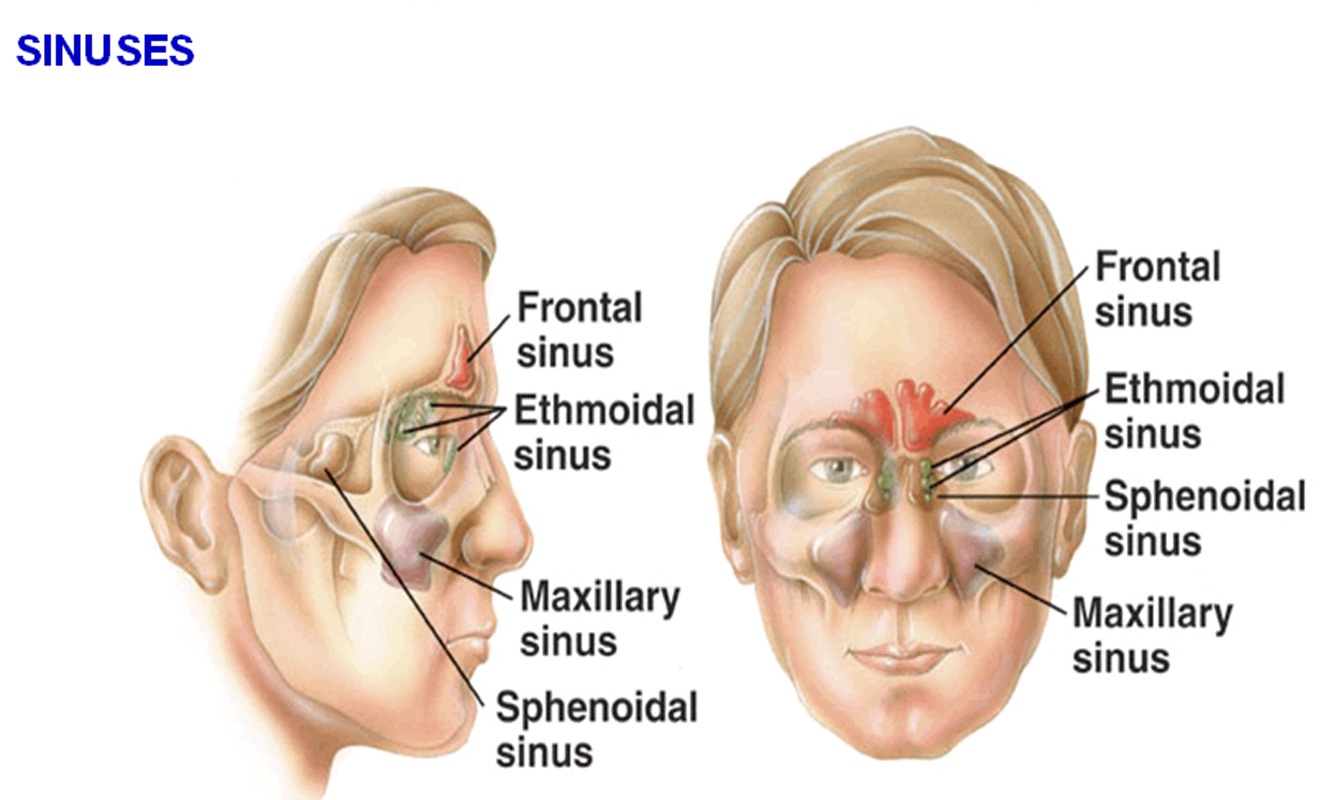
Non-urgent advice: See a GP if:
- your symptoms are severe
- painkillers do not help or your symptoms get worse
- your symptoms do not improve after 1 week
- you keep getting sinusitis
Information:
Coronavirus (COVID-19) update: how to contact a GP
It’s still important to get help from a GP if you need it. To contact your GP surgery:
- visit their website
- use the NHS App
- call them
Find out about using the NHS during COVID-19
Treatment for sinusitis from a GP
If you have sinusitis, a GP may be able to recommend other medicines to help with your symptoms, such as:
- steroid nasal sprays or drops – to reduce the swelling in your sinuses
- antihistamines – if an allergy is causing your symptoms
- antibiotics – if a bacterial infection is causing your symptoms and you’re very unwell or at risk of complications (but antibiotics are often not needed, as sinusitis is usually caused by a virus)
You might need to take steroid nasal sprays or drops for a few months.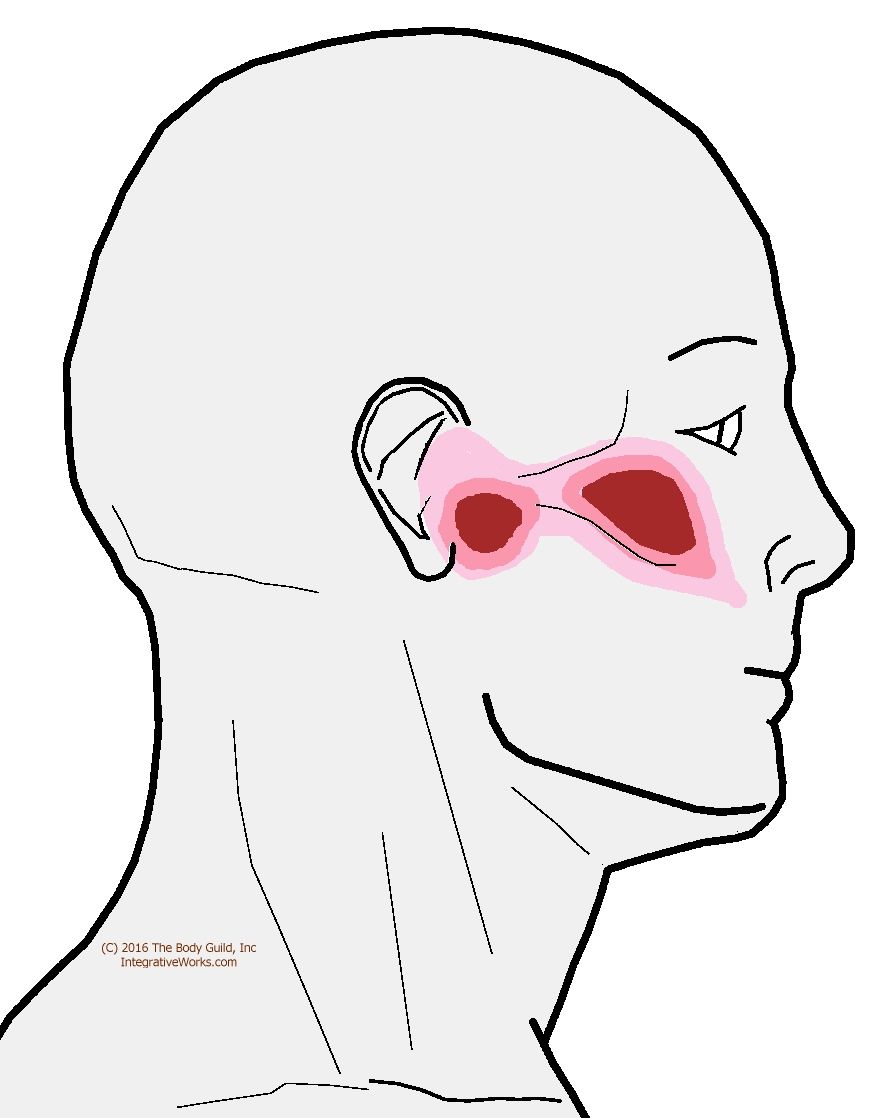 They sometimes cause irritation, sore throats or nosebleeds.
They sometimes cause irritation, sore throats or nosebleeds.
A GP may refer you to an ear, nose and throat (ENT) specialist if, for example, you:
- still have sinusitis after 3 months of treatment
- keep getting sinusitis
- only have symptoms on 1 side of your face
They may also recommend surgery in some cases.
Surgery for sinusitis
Surgery to treat chronic sinusitis is called functional endoscopic sinus surgery (FESS).
FESS is carried out under general anaesthetic (where you’re asleep).
The surgeon can widen your sinuses by either:
- removing some of the blocked tissue
- inflating a tiny balloon in the blocked sinuses, then removing it
You should be able to have FESS within 18 weeks of your GP appointment.
The ENT UK website has more information about FESS.
Page last reviewed: 02 February 2021
Next review due: 02 February 2024
5 Best Home Remedies to Get Rid of a Sinus Infection
- The best home remedies to get rid of a sinus infection include using a warm compress or humidifier.
- Also, try breathing in steam or using a neti pot to help clear congestion and ease stuffiness.
- And like with any illness, staying hydrated and getting plenty of sleep is crucial to help you heal.
- Visit Insider’s Health Reference library for more advice.
LoadingSomething is loading.
Sinus infections are one of the main reasons for doctor’s visits in the US, and also one of the most common illnesses for antibiotic prescriptions.
Related
Are sinus infections contagious? No, but an underlying virus can be
However, many sinus infections can clear up on their own, without antibiotics. If you have a sinus infection, there are various home remedies you can try for relief.
What is a sinus infection?
Sinusitis is the medical term for inflammation of the sinus cavities that are located in your cheeks, behind your forehead, and on either side of your nose. The inflammation traps mucus inside your sinuses, preventing the natural flow from the back of your throat to your stomach.
Yuqing Liu/Insider
When this is caused by bacteria or viruses, it is called a sinus infection.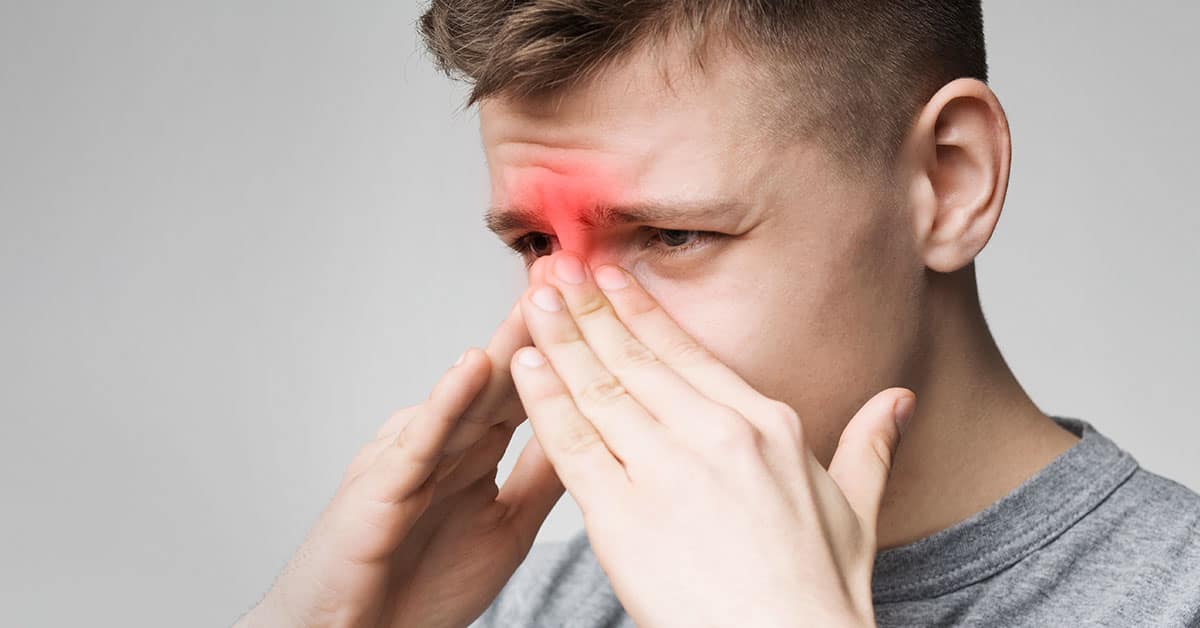 However, sinusitis can also be caused by chronic allergies or nasal polyps.
However, sinusitis can also be caused by chronic allergies or nasal polyps.
The common symptoms of a sinus infection include:
- Pain and pressure around your forehead, eyes, nose, and cheeks
- Thick nasal discharge
- Reduced senses of smell and taste
More severe symptoms can include:
- A fever over 101 degrees Fahrenheit
- Eye swelling
- Nausea and vomiting
If you experience these severe symptoms, you should seek medical attention.
If your symptoms are not severe, the following home remedies may be all you need to relieve the pain and pressure of a sinus infection.
1. Try a warm compress
Applying a warm, moist towel or washcloth to your nose, cheeks, and eyes may help relieve sinus pain by opening up your nasal passages and loosening mucus. You can try doing this for up to 20 minutes at a time, as needed.
Although there are no scientific studies showing the effectiveness of this method, “if somebody feels that a warm compress provides them symptomatic relief without burning their skin, by all means, go ahead and do it,” says Ralph Abi Hachem, MD, assistant professor of head and neck surgery and communication sciences at Duke University School of Medicine.
2. Invest in a humidifier
Humidifiers add moisture to the air, which may help reduce inflammation and open up your nasal passages. For a humidifier to be the most effective, Abi Hachem says it should be placed as close as possible to you in the same room so it can deliver the humidity into your nasal cavity.
Related
The best humidifiers
It’s also important to keep your humidifier clean to prevent bacteria and fungi from building up in the tank and being released into the air, potentially causing lung problems. To clean your humidifier, follow the manufacturer’s instructions. The EPA recommends that you empty the tank and dry all surfaces of the humidifier every day.
To clean your humidifier, follow the manufacturer’s instructions. The EPA recommends that you empty the tank and dry all surfaces of the humidifier every day.
3. Breathe in steam
Similar to a humidifier, breathing in hot, moist steam can help open up your nasal passages and relieve pain and pressure. You can breathe in straight steam or try some herbs to thyme, basil, and eucalyptus to boost symptom relief.
You can try steam inhalation in a couple of ways:
Steam therapy
For steam therapy, you can simply take a hot shower and inhale the steam. Another method is to drape a towel over your head and inhale the steam from a bowl of hot water for about 10 minutes, up to four times a day.
However, a 2012 article in the British Journal of General Practice notes that this method has no proven benefit and may risk burn injuries, especially for children.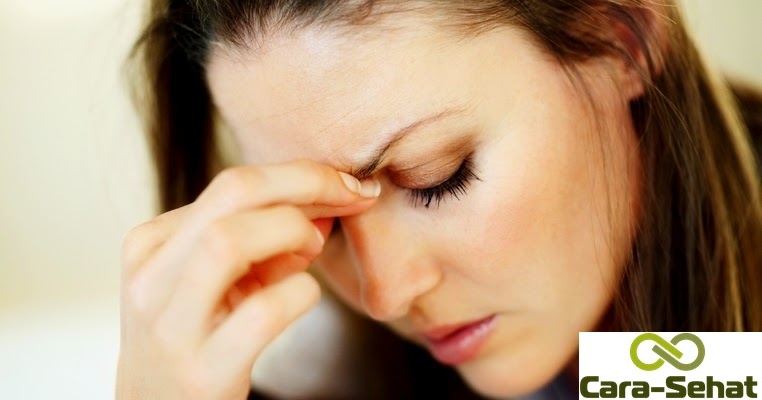
Steam vaporizer
Another option is to use a steam vaporizer that uses electricity to heat water and create steam.
“If you have very thick mucus, it might help make it thinner,” Abi Hachem says. “You should place it relatively close to you, not in one room when you’re in another room.”
Steam vaporizers should not be used around children or pets, since they could be scalded by the steam or by hot water if it tips over.
Although steam vaporizers aren’t as likely as humidifiers to have a mineral buildup, they should still be cleaned each day by emptying the tank and drying all surfaces.
4. Use a neti pot
You can also rinse and help clear your nasal passages using a neti pot. Known as nasal irrigation, this helps loosen mucus and removes dust, pollen, and other debris.
In fact, a 2016 randomized controlled trial found that nasal irrigation is more effective than steam inhalation for improving the symptoms of sinusitis. Participants who used nasal irrigation daily showed improvement after six months, while participants who used steam inhalation did not show improvement.
To safely use a neti pot, follow these steps:
- Lean over a sink and tilt your head sideways so your forehead and chin are almost level. This will help prevent the solution from flowing from your nose into your mouth.
- Insert the spout into your highest nostril. The solution will drain out through your lower nostril. As you do this, Abi Hachem suggests you say the letter “K” to help elevate your palate and prevent the solution from dribbling down your throat.
- Tilt your head in the opposite direction and repeat these steps.
After each use, rinse the neti pot with distilled water and let it air dry. It’s important to be sure only to use distilled water or tap water that’s been boiled for one minute and then cooled.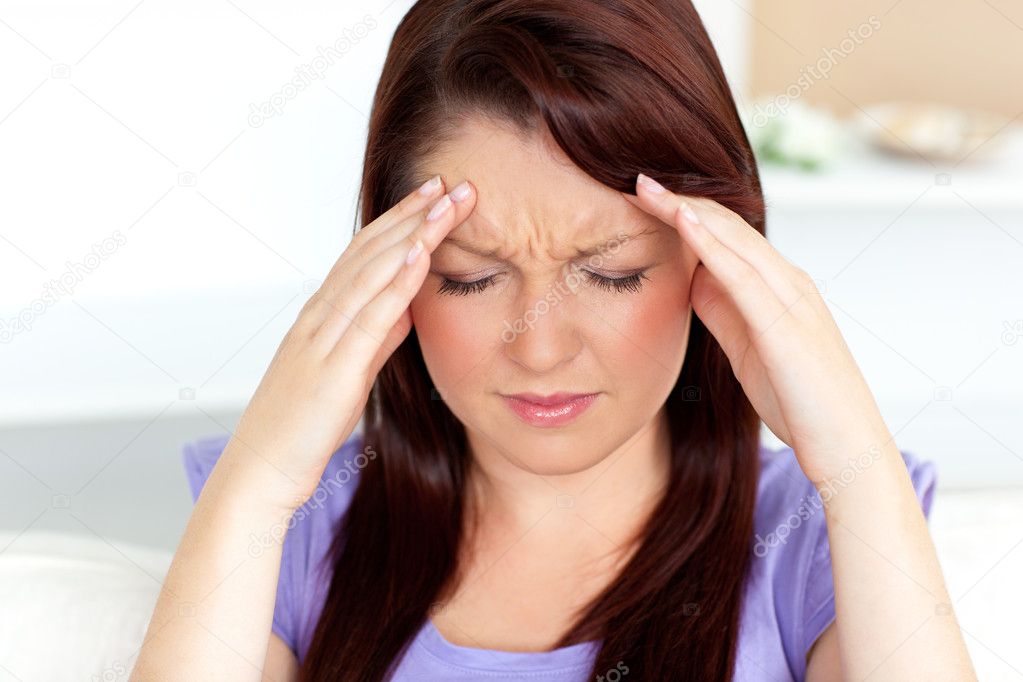 Tap water contains bacteria that can remain inside your nasal passages and lead to rare, possibly fatal infections.
Tap water contains bacteria that can remain inside your nasal passages and lead to rare, possibly fatal infections.
You can also purchase a saline solution or make your own. Adding salt to the water prevents burning or irritation when the solution passes through your nasal membranes.
5. Drink lots of water and get adequate rest
Related
How much water are you supposed to drink a day, debunking the 8 cups-a-day myth
“I recommend drinking a lot of water because it thins the mucus,” Abi Hachem says. While there’s no evidence about the most effective quantity, he recommends drinking at least eight eight-ounce glasses of water each day.
You can also try drinking hot liquids like tea or soup to temporarily help relieve your symptoms. But you should avoid drinking alcohol, as it’s dehydrating and can worsen your congestion. If you’re taking an antibiotic for your sinus infection, drinking alcohol could increase side effects like upset stomach and drowsiness.
But you should avoid drinking alcohol, as it’s dehydrating and can worsen your congestion. If you’re taking an antibiotic for your sinus infection, drinking alcohol could increase side effects like upset stomach and drowsiness.
It’s also important to get about seven to nine hours of sleep each night to help your body rest and recover. “You want to get enough sleep and follow a normal sleep cycle so that all the hormones in your body are maxing out your immune system function,” Abi Hachem says.
Because getting a good night’s sleep can be difficult due to the pain and congestion, you can do the following to help you get more rest:
- Use a neti pot before going to bed to help clear your nasal passages.
- Sleep with your head raised by an extra pillow to help prevent mucus from pooling in your sinuses.
It’s important to note that while these home remedies may help relieve your symptoms, they won’t help your sinus infection clear up any faster. If your symptoms last longer than 10 days, you should see a doctor.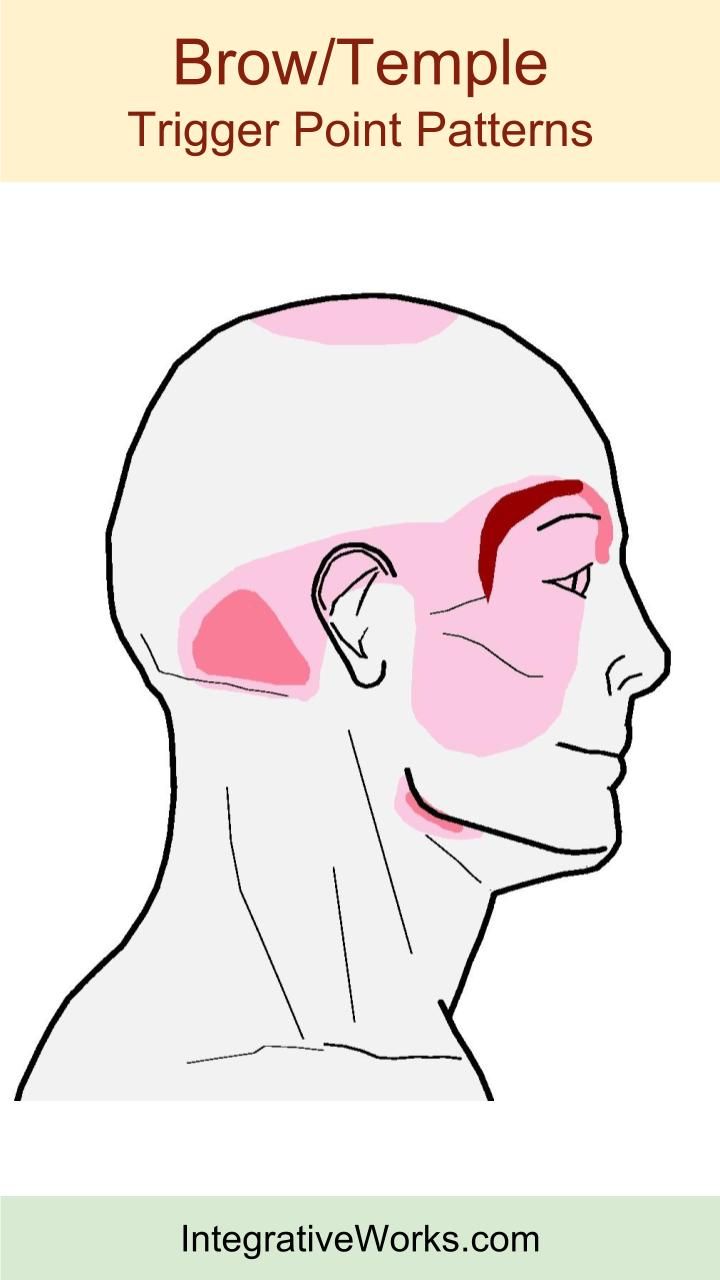
Your doctor may also recommend prescription medication, like antibiotics or decongestant sprays, as well as over-the-counter pain relievers like Tylenol (acetaminophen) or Advil (ibuprofen).
90,000 Sinusitis: symptoms, causes, treatment
29 october 2019
Sinusitis is an infectious disease that affects the maxillary sinuses. Despite the fact that this ailment can go away on its own in 10-14 days, this does not mean at all that there is no need to be treated. It is important at the first suspicion to consult a doctor so that the disease does not become severe and does not become chronic.
What is sinusitis?
Sinusitis can be caused by getting on the nasal mucosa of various infections – pneumococcal, Pseudomonas aeruginosa, staphylococcal and streptococcal.
Often this disease is masked against the background of a runny nose and low immunity, manifested in the form of a stuffy nose, unpleasant painful sensations in the forehead and sinuses, edema, purulent discharge with an unpleasant odor and general malaise.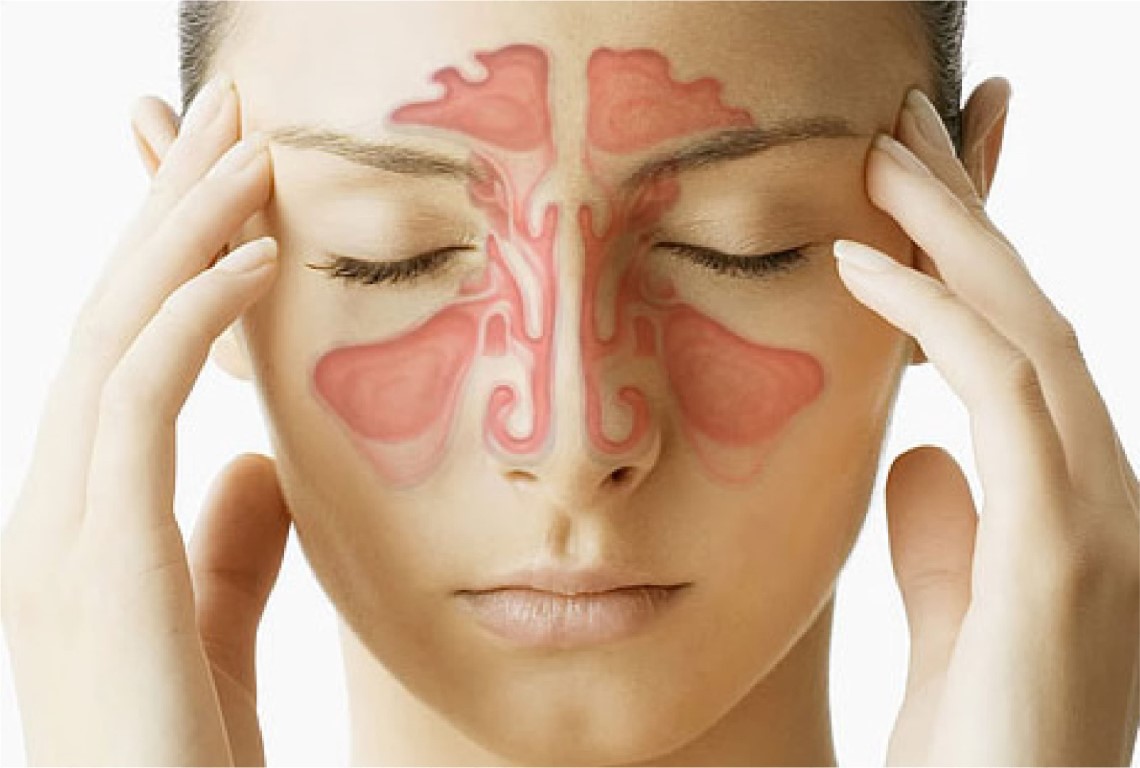 Distinguish between chronic and acute forms of the disease.
Distinguish between chronic and acute forms of the disease.
The main objectives of the treatment are: elimination of infectious agents and restoration of the microflora balance in the nasal mucosa, normalization of immunity.
Causes of the onset and exacerbation of sinusitis:
- Long-term disturbance of mucus outflow due to trauma, lingering rhinitis, allergies, polyps, tumors.
- Inflammatory processes in the oral cavity, caries.
Signs of illness
- Headache felt in the forehead, cheekbones, temples, eyes and upper teeth.
- Increasing pain with pressure at the base of the nose, near the inner corner of the eye, in the area of the projection of the sinuses.
- stuffy nose.
- Severe mucous or mucopurulent nasal discharge.
- When bending forward, a feeling of heaviness in the head.
- Smell disorder.
- Swelling of the cheek or eyelid (with bilateral sinusitis, it may be invisible due to symmetry).

- Memory impairment, irritability, insomnia.
- Increase in body temperature (up to a maximum of 38 ° C).
- Discomfort, general weakness.
How to recognize sinusitis
Since most of the symptoms of sinusitis are similar to a cold, it is important to pay attention to the following details and contact an otolaryngologist in a timely manner.
- If the treatment prescribed by the doctor does not help and the health condition has deteriorated, this may mean that the infection has penetrated into the maxillary sinus. Therefore, a correction of treatment is required.
- With sinusitis, the headache often subsides during inhalation with menthol and eucalyptus preparations, instillation of vasodilators and warm drinks.If you notice temporary improvement, this is a reason to see a doctor.
- Sinusitis is characterized by an uneven headache (cheekbones, temples, crown), with a cold, the whole head hurts.

- Unpleasant pressure on the inside of the face, most likely caused by the pressure of pus in the paranasal sinuses.
- Purulent nasal discharge must be removed to avoid complications such as thrombosis of the venous sinuses, meningitis, encephalitis, etc.
Diagnostics and examinations
To diagnose sinusitis, specialists resort to the patient’s complaints, his observations of his well-being, etc.Thus, the doctor may suspect sinusitis and prescribe an examination.
- During the appointment, the otolaryngologist examines the nasal cavity for the subject and nature of the discharge.
When sinusitis is detected, hardware examinations can be prescribed:
- X-ray (to detect the accumulation of fluid in the sinuses, in what quantity, whether the mucous membrane is thickened).
- Panoramic tomography of the upper jaw (if there is a suspicion of a connection between sinusitis and dental diseases).

- Computed tomography (the shape of the sinuses, which sinuses are affected, how much content there is).
- Allergic examination (if allergic sinusitis is suspected).
- In rare (difficult) cases, thermal imaging and ultrasonic location are performed.
Home treatment
The main directions in the treatment of sinusitis are to remove the contents of the sinuses, eliminate the infection and stop the inflammation. If the disease is not started, you can be treated at home on your own, following the doctor’s recommendations.
To reduce inflammation of the maxillary sinuses, the main thing is to get rid of the infection.
As a rule, appropriate drugs are prescribed (antibiotics, antivirals or antifungals).
Since sinusitis of a bacterial nature is considered the most common, antibiotics are prescribed. They can only be taken as prescribed by a doctor, because these drugs do not help with viral and fungal sinusitis.
The course of antibiotics (in moderate or severe form) lasts at least a week.With a chronic course and in a neglected case, at least 14 days are required. The drug is selected individually by the doctor, so the patient should listen to the opinion of a specialist.
In parallel with antibiotic therapy:
- Removal of nasal discharge.
- Expansion of the mouth of the maxillary sinuses.
Drug use:
- Vasoconstrictor agents ( naphthyzin , sanorin , galazolin ), which reduce swelling of the nasal mucosa.However, they cannot be used for a long time, because there is addiction and the threat of atrophy of the nasal mucosa.
- Anti-inflammatory drugs ( ibuprofen , nimesulide ).
- Antihistamines ( suprastin , tavegil , diazolin ).
- Mucus thinning agents: acetylcysteine ( ACC ), sinupret .

- Enzyme preparations ( crystalline trypsin ) – topically, as part of solutions when washing the sinuses.
Non-drug methods
- For sinusitis, it is recommended to drink plenty of warm drink (milk), carbonated mineral water, decoctions of plantain and coltsfoot.
- Inhalation of warm humid air (vapor) is indicated. Hot air is contraindicated, since it increases the edema of the mucous membrane.
- Rinsing the nasal cavity and throat works well with the following composition: 1 liter of warm water (38–39 ° C) – 1 tsp.spoon of salt, ¼ teaspoon of soda and 5 drops of iodine. The solution is drawn in alternately with the left and right nostrils, pouring out through the mouth or nose (do not allow it to enter the larynx). Rinsing of the nasal cavity is performed at least 2-4 times a day for 1-2 weeks.
 The solution temperature should be between 38–40 ° C. For this procedure, solutions based on a wide variety of agents and drugs can be used.
The solution temperature should be between 38–40 ° C. For this procedure, solutions based on a wide variety of agents and drugs can be used.
Other effective rinsing recipes:
- 1 teaspoon of sea salt in a glass of boiled water.
- Green tea infusion.
- Infusion of St. John’s wort, black currant leaves, string, calendula (1 tablespoon per glass of boiling water, infused for 20-30 minutes).
- Decoction of chamomile / oak bark with honey (for a glass of decoction 1 tablespoon of honey).
- Collection of herbs elekasol.
- Solution of furacilin or potassium permanganate.
- Thermal procedures (application of bags with heated salt or warm boiled eggs to the area of the nasal sinuses).
- Compresses for the area under the eyes.They can be used only during the healing process, and not at the initial stage, when this procedure will promote inflammation.
Treatment in a medical institution
- A method of moving fluids (or “cuckoo”) using special catheters.

Through one of them, a furacilin solution is passed under pressure, and through the second, fluid is sucked out from the nasal sinuses. Thus, the accumulated purulent discharge is removed into the reservoir, and the patient is relieved.As a rule, 5–7 procedures are sufficient.
- Yamik catheter works similarly to a cuckoo catheter and, in combination with laser warming, promotes effective treatment of acute or chronic sinusitis.
- Puncture is indicated: if drug treatment does not help, acute pain in the maxillary sinus area (aggravated by tilting the head forward), an unpleasant odor in the nose, body temperature above 38 ° C, no outflow from the sinuses, the presence of pus based on an X-ray.
In conclusion, I would like to add that sinusitis is a serious disease that requires mandatory and immediate consultation with an otolaryngologist.
Source: Milovanova Sophia, journalist
90,000 We will help relieve headaches with rhinitis and sinusitis
When a person gets headache , it is always excruciating. It is impossible to concentrate on a single thought, the head seems heavy and huge. But the worst thing is not the discomfort that this symptom delivers, but its causes. After all, headaches are a sign of serious deviations in the body.They require careful study and treatment.
It is impossible to concentrate on a single thought, the head seems heavy and huge. But the worst thing is not the discomfort that this symptom delivers, but its causes. After all, headaches are a sign of serious deviations in the body.They require careful study and treatment.
Symptoms and types
In a symptom such as headache , types are classified according to etiology, manifestations, localization. Pain syndrome can be primary or secondary. In the first case, it manifests itself by itself, under the influence of various factors, in the second – it is a sign of disease . Headache can be localized:
- In the back of the head
- At the temples
- Forehead
- Near Eyes
- All over the head
Most often, head pain is classified by manifestation.Let’s consider the most common types.
Cluster
It appears in the front of the head, often on one side. Cluster headache is one of the most severe and painful, it lasts 15-20 minutes. It has a sharp character and can be stabbing or pulsating . Another characteristic feature is that it manifests itself in a series of attacks (clusters), hence the name. Clusters are repeated at regular intervals.
It has a sharp character and can be stabbing or pulsating . Another characteristic feature is that it manifests itself in a series of attacks (clusters), hence the name. Clusters are repeated at regular intervals.
Tension
The most common type, also often referred to as tension headache .It usually occurs at the top of the head, where the person feels a lot of pressure. At the same time, the muscles of the eye sockets and forehead tighten – as if they were tightly squeezed. Painful sensitivity to noise and light also appears.
Migraine
Migraine – Severe headache of a pulsating nature, affecting, as a rule, one side. At first, there is irritation and fatigue, then painful sensations begin to appear, which gradually increase .At the very peak of a migraine, a person feels dizziness, nausea, painfully reacts to light and noise. Also, this type of pain is characterized by an aura, which is a complex of symptoms:
- Movement coordination is impaired
- Limbs go numb
- I’m having trouble speaking
During a migraine, it is difficult for a person to concentrate, he is completely absorbed in pain.
Causes of headaches
Headaches can be caused by different causes , but quite often they are associated with inflammatory diseases of the cavity and sinuses.
Inflammation of the nasal passages and sinuses
When a person is worried about a headache , the cause of may be related to ENT diseases:
- Rhinitis – when a person sneezes and blows his nose, severe overexertion occurs, and pain in the head may develop.
- Sinusitis is an inflammation of the paranasal sinuses, which often causes headaches. Most often, this symptom is caused by the following types of it:
- Sinusitis – an inflammatory process in the maxillary sinuses. Headache with sinusitis is localized in the cheekbones, nose, forehead.
- Frontitis – causes pain in the area of inflamed frontal sinuses, spreading to the eye sockets and temples.
It should be noted that headache is one of nonspecific symptoms of these diseases. It does not manifest itself in all patients.
It does not manifest itself in all patients.
Other reasons
If a headache occurs, the reasons for may be as follows:
- Traumatic brain injury
- Stress
- Increased intracranial pressure
- Inflammation of the trigeminal nerve
- Neuralgia
- Mental illness
- Aneurysm
- Brain tumor
- Hangover
Also one of the common reasons why headaches appear is psychosomatics .That is, pain syndrome arises from psychological problems : rejection of reality, depression, resentment, anger, feelings of hopelessness. If you immediately understand what psychosomatics is connected with, you can get rid of pain without medication.
Diagnostics
When a patient complains of headaches , he is prescribed:
- Rhinoscopy – allows you to understand if there is inflammation in the nasal passages and sinuses
- CT and MRI – shows the presence of lesions, tumors and other pathologies of the brain
- Ultrasound of cerebral vessels – diagnoses vascular problems leading to intracranial pressure disorders
Competent diagnosis allows you to find the cause of the problem and prescribe a comprehensive treatment.
What to do if you have a headache?
Feeling strong pains, a person wants to get rid of them at any cost. Therefore, the hand automatically reaches for the analgesics. And they really work – it’s better to take a pill than endure the torment. But if the pain syndrome recurs often, it is better not to suppress it with painkillers, but to try to find the cause. To do this, you need to see a doctor.
Headaches
Pain in the head in people of different ages manifests itself and is treated in different ways.
In children
A child’s headache leads to the fact that he becomes moody, disobedient, crying and holding his head. It is important to detect these symptoms in time and see a doctor immediately. it is impossible to relieve pain in children with conventional analgesics – they are too strong and can cause side effects. The doctor will find the cause and tell you how to remove this unpleasant symptom.
In pregnant women
Headache during pregnancy is dangerous – if there are problems with the woman’s health, it can have a bad effect on the child. The reason must be sought immediately by contacting the supervising doctor. It is also important to remember that pregnancy headache is not relieved by strong pain relievers – they are toxic to the fetus.
The reason must be sought immediately by contacting the supervising doctor. It is also important to remember that pregnancy headache is not relieved by strong pain relievers – they are toxic to the fetus.
In adults
To get rid of a headache, an adult should be examined. This is the only way to find the cause and eliminate it in time. If you avoid doctors and continue to be treated with analgesics, you can “earn” serious complications.
Headache – Treatment
When patient has a headache, treatment for is tailored to the cause.For example, if inflammatory diseases of the sinuses and passages are diagnosed, the doctor prescribes antibiotics and topical agents. This allows you to remove pathogenic microflora, relieve swelling, clear the nose of mucus.
Peculiarities of headache treatment at Betterton
Our ENT center for children and adults offers comprehensive treatment for patients with diseases of the nose, throat and ear. We have successfully helped many people get rid of headaches associated with inflammation of the nasal sinuses.Make an appointment with our specialist – he will conduct a comprehensive examination and select an individual therapy regimen.
Possible complications
Pain in the head can be dangerous – it leads to strokes and other unpleasant consequences. With rhinitis and sinusitis, inflammation can spread to the meninges and bone tissue, which poses a threat to human life.
Prevention
In order not to suffer from headaches, lead a healthy lifestyle, go in for sports, protect yourself from stress.It is also recommended to treat ENT diseases on time and protect yourself from infections.
Do not try to treat yourself! Consult otolaryngologists at Betterton Hearing Centers in the capital ×
Make an appointment with a doctor:
Make an appointment with a doctor:
90,000 Sinusitis (sinusitis), acute, symptoms – Clinic Health 365 y.Ekaterinburg
The disease in which inflammation of the maxillary paranasal sinus occurs is called sinusitis . Symptoms of sinusitis are varied.
Sinusitis is included in a group of diseases that are currently defined by the general term – sinusitis, so further we will use this particular term. Sinusitis, synonym: sinusitis – acute or chronic inflammation of one or more paranasal sinuses. Usually occurs as a complication of the common cold, flu, measles, scarlet fever and other diseases.
Sinusitis at the site of localization is divided into:
- Sinusitis – inflammation of the maxillary paranasal sinus;
- Frontitis – inflammation of the frontal paranasal sinus;
- Ethmoiditis – inflammation of the ethmoid cells;
- Sphenoiditis – inflammation of the sphenoid sinus
With acute sinusitis , the cavities adjacent to the nasal passages (sinuses) become inflamed and swollen.This makes it difficult for the mucus to pass through, and it builds up inside. This common condition is also called acute rhinosinusitis.
In acute sinusitis, it becomes difficult to breathe through the nose, and the area of the face, in particular around the eyes, becomes inflamed. There may be throbbing pain in the face or headache.
Most often, acute sinusitis occurs as a complication of a common rhinitis. Other causes could be bacteria, allergic reactions, or fungal infections.Treating acute sinusitis is necessary depending on the cause. Home remedies are sufficient in most cases. However, prolonged sinusitis can lead to serious infections and other complications. If the disease lasts more than eight weeks or recurs periodically, it is already chronic sinusitis.
Symptoms of acute sinusitis include :
- Thick yellow or greenish discharge from the nose or down the back of the throat;
- Nasal congestion and as a result – difficulty breathing;
- Pain, tenderness, swelling, bloating in the areas around the eyes, cheeks, nose and forehead;
In addition, there may be other symptoms of acute sinusitis:
- Pain or pressure in the ear;
- Sore throat;
- Bad breath;
- Fatigue;
- Temperature;
- Pain in the upper jaw and / or toothache;
- Decreased sense of smell and taste;
- Cough that may be worse at night.
When to see a doctor
If symptoms are not expressed, try to heal yourself; but you should see your doctor if you have any of the following symptoms:
- Condition does not improve for several days or worsens;
- Temperature above 38.1 C;
- The disease repeats itself.
See your doctor right away if you have symptoms that could lead to a serious infection:
- Pain and swelling around the eyes;
- Swelling in the forehead area;
- Severe headache;
- Confusion of consciousness;
- Double vision or any other visual impairment;
- Stiff neck;
- Shortness of breath.
You can get more detailed information on acute sinusitis from the otolaryngologists of the Zdorovye 365 clinic in Yekaterinburg.
90,000 Headaches with sinusitis – DELFI
Patients who have sinusitis often complain of severe headache. There is nothing strange in this, because such a painful symptom is one of the main signs of this disease, the portal medaboutme.ru writes.
As a rule, the pain may appear in the area of the eyes or the frontal part, and sometimes the patient may feel that a tooth hurts.But the main problem is that the headache in this disease is very similar in nature to the painful sensations of a migraine. For example, the syndrome begins in the morning and becomes unbearable in the evening. In this case, the pain is deep and throbbing. Also, painful sensations increase when bending forward or turning the head.
Features of headache with sinusitis
Despite the fact that the symptoms of migraine and sinusitis are quite similar, they can still be distinguished. For example, in people with migraine attacks, the painful sensations are increased by loud sounds or light.Also, migraines are often accompanied by constant nausea and vomiting. With such a pathology, there is no purulent discharge and puffiness under the eyes.
As for sinusitis headache, it occurs due to increased pressure in the paranasal sinuses, which is associated with the accumulation of mucus or pus in them. As a rule, in a healthy person, the removal of accumulated mucus from the sinuses is carried out through the nose. And with inflammation of the sinuses, this does not happen. As a result, bacteria remain in the body and multiply very quickly.After taking painkillers, the pain does not go away, and often continues to intensify. It becomes less strong after the “correct” blowing of the nose or when the person is in the supine position.
Timely consultation of a doctor with sinusitis and migraine
Only a doctor can distinguish a headache with sinusitis from similar painful sensations with migraine. After all, he perfectly knows all the symptoms of both diseases, as well as how the treatment of migraines and sinusitis is carried out.Therefore, in addition to the usual examination, he asks the patient a series of questions to determine why the head hurts. For example, the doctor first examines the patient, then checks the sensitivity of various areas on the face. The presence of sinus inflammation is also diagnosed. As additional measures, computed tomography, X-rays, tests for allergic reactions, etc. can be prescribed.
Once the cause of the headache has been identified, the doctor will prescribe appropriate treatment and usually recommend dietary changes and a healthy lifestyle.
Treatment of acute purulent sinusitis in adults
Treatment of acute purulent sinusitis in ENT clinic No. 1
Article rating
5.00 (Voted: 3)
Acute purulent sinusitis is an inflammation of the paranasal maxillary sinuses.The disease is quite common, most often it is a complication of an acute respiratory viral disease or any prolonged nasal congestion (vasomotor rhinitis, allergic rhinitis, etc.). That is, any long-term runny nose and nasal congestion, regardless of the cause of its occurrence, if left untreated, can be complicated by purulent inflammation of the paranasal maxillary sinuses. (P.S.: Also, the cause of the development of unilateral purulent sinusitis can be inflammatory processes in the roots of the teeth of the upper jaw or filling material, like a foreign body, the entry of which into the maxillary sinus is possible in some cases when filling the roots of the 5-6th teeth of the upper jaw.)
The mechanism of development of inflammation in the maxillary sinuses:
Due to swelling of the nasal mucosa, the outlet of the maxillary sinus (anastomosis) is blocked, which hinders the physiological outflow of mucus from the sinus. In addition, the lack of normal air exchange in the sinus itself provokes an increase in mucus formation, mucus accumulates, stagnates and becomes an ideal environment for the reproduction of bacteria and that opportunistic microflora that populates the mucous membranes, which leads to purulent inflammation.
Who is especially threatened by the development of purulent sinusitis:
The risk of developing acute purulent sinusitis increases many times in people with anatomical features of the nose and maxillary sinuses (curvature of the nasal septum, anatomical features in the area of the anastomosis of the maxillary sinus), which impede normal aeration of the maxillary sinus and evacuation of discharge from the sinus.
When can you suspect the development of acute purulent sinusitis:
If against the background of a runny nose and nasal congestion:
- nasal discharge becomes yellow-green, sometimes foul-smelling
- nasal congestion worsens
- joins a feeling of congestion or heaviness in the maxillary sinuses (infraorbital region to the right and left of the nose)
- headache
- Pain in the projection of the maxillary sinus (facial pain), a feeling of pressure and pain in the maxillary sinuses may increase when the head is tilted down.
- There is often a feeling of inability to concentrate, deterioration in general well-being
- it is possible to increase the temperature to subfebrile numbers (37-37.8 degrees)
Why, when symptoms of acute purulent sinusitis appear, it is necessary to urgently consult an ENT doctor:
Do not forget that “the nose grows on the head”, which means any purulent diseases of the paranasal sinuses is the presence of pus in the skull, in the immediate vicinity of the cavity of the eye sockets and to the brain, therefore, complications can be extremely serious, with the most unpredictable consequences:
- Otitis
- Intraorbital complications (phlegmon of the orbit, abscess of the orbit)
- Intracranial complications (meningitis, encephalitis, brain abscess)
Do not try to cope with sinusitis yourself.The presence of a purulent process in the sinus suggests that it cannot empty itself and if time is lost, it is highly likely that the pus will make its way into one of the nearby organs.
Modern possibilities of diagnostics and treatment of acute purulent sinusitis.
In modern specialized ENT clinics or ENT offices there are all the necessary conditions for the diagnosis of acute purulent sinusitis on the day of treatment. The otorhinolaryngologist will conduct an endoscopic examination of the nose and nasopharynx, on which, using a video camera, with lighting and magnification, the site of the anastomosis of the maxillary sinuses will be examined for the presence and nature of the discharge from the anastomosis.
Ultrasound examination of the paranasal sinuses will confirm the presence or absence of edema and discharge in the maxillary sinuses.
After the diagnosis of ENT, the doctor will prescribe drug therapy, as well as individually select the patient for a course of medical manipulations and apparatus treatment, facilitating the evacuation of purulent contents from the sinuses, which will make it possible from the first days of treatment to alleviate the patient’s condition, reduce pain, ease nasal breathing, and significantly improve recovery prognosis, avoid repeated courses of antibiotic therapy.
If necessary (with a high risk of developing intracranial complications), puncture of the maxillary sinuses is performed with rinsing and introduction of medicinal substances into the sinus. Modern methods of anesthesia allow this manipulation to be carried out painlessly, with minimal discomfort for the patient. An alternative to puncture is extraction of purulent discharge using a Yamik catheter (an effective non-invasive method).
In some cases, it is possible to flush the sinuses of the nose by the displacement method (using an electric suction pump).
In order to speed up the healing process, thoroughly sanitize the nasopharynx from pathogenic microflora, relieve swelling, facilitate the independent outflow of discharge from the sinus, stop inflammation and strengthen local immunity, hardware treatment methods are used: UZOL therapy, laser therapy, photochromotherapy, magnetotherapy.
Otorhinolaryngologists of the ENT clinic number 1 medical center have developed a comprehensive program for the treatment of acute purulent sinusitis.
Do not delay your visit to the ENT doctor, remember, the sooner you seek help, the easier it will be for a specialist to cope with the symptoms of the disease, the more gentle treatment methods are applicable, the less chance of chronicity and the formation of complications!
How to deal with summer sinusitis – Rossiyskaya Gazeta
ENT doctors note that it is at the end of summer that it is often necessary to diagnose sinusitis.
It would seem that this disease is more typical for the cold season, but it is often “brought” after a rest in warm regions.And the whole vacation immediately goes, as they say, down the drain. The fact is that sinusitis occurs not only as a complication after a prolonged runny nose, acute respiratory infections or flu, which are characteristic of autumn and winter. The bacterial origin of the disease is also possible. For example, a person bathed in a dirty pond or in a pool in which they did not change the water for weeks, and please – sinusitis will not keep you waiting. Moreover, in this case, it often becomes chronic.
What’s in your bosom?
Sinusitis is an inflammation of the maxillary paranasal sinus.In medicine, it is called maxillary, hence the name.
Due to a cold or the ingress of microbes, the mucous membrane swells and blocks the outlet from the sinuses to the nasal cavity. They accumulate mucus, in which bacteria begin to develop even more actively. They also lead to disease.
Pus appears in the sinuses, it begins to press on the walls of the nose, which causes severe pain. Toxins produced by microbes are absorbed into the body of a sick person and cause the characteristic symptoms of intoxication, namely, malaise, headache and fever…
What to do with such a misfortune?
Identify in time
First of all, of course, do not be lighthearted about the common cold. If it lasts for several weeks, be sure to see an ENT doctor. Do not think that if the discharge from the nose is transparent, then this is definitely not sinusitis. It is quite cunning and can be misleading for a long time with the light color of mucus. One maxillary sinus can become inflamed, or both at once. If only one sinus is inflamed, then the discharge may be from this side.
So, the main symptom is a long runny nose. But there are still a lot of signs of sinusitis that accompany a runny nose.
Difficulty breathing due to swelling of the sinus mucosa.
Due to constant nasal congestion, the voice becomes nasal.
If the sinuses are inflamed on both sides, then a decrease in the sense of smell is also a symptom. You may suffer from dry mouth, discomfort in the ears.
In acute sinusitis, pressing on the cheeks in the sinus area causes acute pain, they can even hurt and just like that.
Acute headache in the forehead, which sharply intensifies, as if piercing the bridge of the nose, if the head is first tilted forward and then raised quickly.
The general condition is deteriorating: the body temperature may rise sharply, weakness and lethargy appear, appetite disappears.
The acute form of sinusitis usually lasts no longer than two weeks. If you do not take any measures to treat sinusitis, then it will turn into a chronic form.
Do not bring to puncture
The diagnosis is made possible by radiography or computed tomography (a more informative method) of the paranasal sinuses.So do not delay a visit to the doctor, do not drive the disease into a chronic form. The infection can go to the lungs, tonsils, and even (fortunately rarely) the brain. Without taking any measures to treat sinusitis, you risk getting sore throat, pneumonia, or meningitis.
Self-treatment of advanced sinusitis is practically impossible, because antibiotics are usually required from medicines. Physical therapy is also needed. And if this does not help, they resort to surgery.In these cases, one cannot do without a puncture (puncture), which, by the way, in vain causes panic in patients: modern means of anesthesia allow you to perform this procedure without causing suffering to a person.
To help basic treatment
There are quite popular traditional medicine recipes that help treat sinusitis. But remember that these funds can only be considered as adjuncts to the treatment prescribed by the doctor. And it is even better to use folk recipes as a preventive measure, when the runny nose has not yet turned into sinusitis.
Among the effective methods:
1 Salt water rinsing. To prepare the solution, you can use both table salt and dry sea salt (strain the prepared solution) in the proportion: a teaspoon of salt to a glass of warm water. You can also use a soda-salt solution for these purposes: 1/2 teaspoon of baking soda, a teaspoon of salt in a glass of warm water.
2 Children can rinse their nose with any mineral water or warm water with the addition of a few drops of calendula tincture, or eucalyptus tincture, or a few drops of alcoholic tincture of iodine.Before rinsing, vasoconstrictor drops (naphthyzin, galazolin) can be dripped into the nose. After washing, diluted beet juice.
3 It is useful to eat more horseradish and garlic; substances contained in plants help to cleanse the paranasal sinuses from mucus. It is also recommended to sniff horseradish and garlic crushed into gruel.
4 With sinusitis, it is recommended to knock on the nose (bridge of the nose) for 2-3 minutes with the big phalanx of the thumb. Rest for 5-20 minutes and repeat.Do it at least 2 times an hour.
5 The patient’s condition is greatly facilitated by regular rubbing with mustard oil of the places of the paranasal sinuses – near the wings of the nose, the bridge of the nose, above the eyes. Our grandmothers always warmed up these places – hot salt, sand, hard-boiled egg. But modern medicine does not recommend such heating, as they can cause dangerous complications.
By the way
For a patient with sinusitis, air humidity matters.In dry air, the nasal mucosa dries up. If there is no special air humidifier, and the weather is dry, then you can hang wet towels in the living quarters; it is also recommended to shower more often.
You can do inhalation – inhale water vapor through your nose (over a saucepan or over a kettle). But the water shouldn’t be too hot.
Council
My grandmother’s recipe
This advice was used by many of our relatives and acquaintances with a lingering rhinitis and sinusitis.I experienced it myself – the result exceeded expectations. The recipe is quite simple, although its implementation brings some inconvenience. You need to take half a teaspoon of fresh butter and grind it with a pinch of baking soda (do not overdo it with soda, otherwise it will tingle strongly). With cotton wool flagella, rub this mixture as deeply as possible into each nostril several times. Then, for at least an hour after the procedure, lie down without a pillow, if possible without removing the flagella with oil from the nose.
Allergic rhinitis in children: symptoms, diagnosis, treatment
Benefits of treating allergic rhinitis in a child at the European Medical Center:
- Modern methods of diagnostics and treatment with proven effectiveness
- Allergists-immunologists with extensive experience and training abroad
- The fastest and most accurate diagnosis
- Personalized therapy selection
- Possibility of additional consultation with any pediatric specialist
Allergic rhinitis (AR) is inflammation and swelling of the nasal mucosa due to exposure to causative allergens.It can be acute and chronic. Allergic rhinitis causes nasal and sinus congestion. When sinuses fill up with fluid, bacteria can grow in them, causing headaches and yellow discharge.
According to the WHO, allergic rhinitis is present in 20-40% of the world’s population. The prevalence of allergic rhinitis among children ranges from 8.5% at 6 years old to 34% in adolescents. It is more common in boys than in girls. An increase in the incidence is noted from the age of 6 and reaches a peak by the age of 15-18.
Classification
Traditionally, allergic rhinitis has been classified based on the duration and severity of symptoms.
Depending on the allergen exposed, it can be seasonal (pollen or fungal allergens) or year-round (house dust mites, cockroaches, animal dander). However, it is not always possible to distinguish seasonal from perennial allergic rhinitis, therefore the duration of symptoms is often used as a criterion for classification.
- intermittent (seasonal or year-round, acute): symptoms last less than 4 days a week or less than 4 weeks a year;
- persistent (seasonal or perennial, chronic, long-term): Symptoms for more than 4 days per week or for more than 4 weeks per year.
According to the severity of symptoms:
- Mild allergic rhinitis (insignificant symptoms, no sleep disturbance and a decrease in the quality of life: physical activity does not decrease, indicators in studies are preserved).
- Allergic rhinitis of moderate severity and severe course (symptoms lead to sleep disturbances, decreased physical activity, quality of life and rest; deterioration of educational indicators).
In addition, the exacerbation and remission of allergic rhinitis are noted separately.
Causes of allergic rhinitis in a child
At the heart of the disease is an allergic reaction that develops in response to contact with an allergen. These allergens are often small volatile particles – pollen from trees and grasses, house dust, fungal spores, hair or animal skin particles.Also among the possible allergens are food.
A child’s allergic rhinitis can be aggravated by additional factors, such as cold air or strong odors.
Seasonal allergic rhinitis develops during the period of dusting of grasses and trees. Seasonal rhinitis is characterized by attacks that appear within a few hours after contact with an allergen and have a clear seasonality.
Year-round allergic rhinitis develops at any time of the year and is chronic in nature.
The severity and duration of seizures depends on the time of exposure to the allergen.
Symptoms
Symptoms may appear at different times, but in general: the more severe the attack, the more varied the clinical picture.
The main symptoms of acute allergic rhinitis in children include:
- nasal congestion and profuse nasal discharge,
- sneezing attacks,
- cough,
- itchy nose,
- watery eyes and eye irritation.
Itching and tickling can also appear in the nasopharynx. A prolonged attack can cause swelling of the face and eyelids. With year-round allergies, the risk of sinusitis or otitis media is added to the described symptoms. As a result of nasal congestion, snoring appears, rhinolalia (nasal voice) may appear.
During seizures, the child becomes irritable, may refuse to eat. This is due to the dullness of taste and smell. In addition, frequent blowing of your nose causes congestion in your ears, causing additional discomfort.
Diagnostics
The main goal of diagnosis is to differentiate allergic rhinitis from similar diseases. Among them:
- conjunctivitis;
- hay fever;
- urticaria.
To determine the treatment tactics, anamnesis is also taken, which makes it easier to find the key allergen. Allergy tests are carried out to determine the desired trigger.
Skin tests: The doctor makes small scratches on the child’s arm and drips special test solutions containing particles of common allergens onto them.The goal is to assess the immediate immune response.
5 days before the procedure, you must stop taking any medications that can affect the result.
The test is not recommended for children under one year old.
ELISA of blood for specific antibodies produced by the immune system in response to an irritant. The test can be performed on children of any age.
Possible additional tests: X-ray or CT scan of the sinuses, endoscopic examination, analysis of nasal discharge.They help to clarify the diagnosis and severity of allergic rhinitis.
Treatment
Includes:
- Limitation of contact with allergen
- drug therapy
- Allergen-specific immunotherapy (ASIT)
Limiting exposure to allergens
It is impossible to completely avoid contact with many allergens. But even a partial limitation of the exposure to the allergen facilitates the course of AR and simplifies therapy.Restrictive measures are effective only in case of preliminary allergological examination and accurate identification of the allergen.
- Pollen allergens. In spring, symptoms are caused by dusting trees (birch, alder, hazel, oak), in the first half of summer – plants (hedgehog, timothy, rye), in late summer and autumn – weeds (wormwood, plantain, ragweed). To limit contact with allergens, it is necessary to keep the windows in the room and in the car closed, use air conditioning systems, and limit the time spent outside.After a walk, it is advisable to take a shower and put your outerwear in a closed cabinet.
- Mold spores. It is necessary to thoroughly clean air humidifiers, hoods, maintain a relative humidity of at least 50%.
- House dust mite allergens. The use of special anti-mite bedding and mattress covers helps to reduce the concentration of mites, but does not significantly reduce the symptoms of allergic rhinitis.
- Animal allergens.Contact with the animal must be completely excluded.
- Food Allergens (Pollen Sensitization Cross-Reactions).
It is important to remember that improvement in the condition does not occur immediately after the elimination of allergens, it takes time.
Drug therapy
Antihistamines
Second-generation antihistamines are better tolerated and faster onset.However, in some cases, they can be mildly sedating.
Intranasal corticosteroids
Intranasal glucocorticosteroids (GCS) actively affect the inflammatory component of AR and effectively reduce the severity of itching, sneezing, rhinorrhea, nasal congestion and eye symptoms. Well tolerated. To increase efficiency, it is recommended to cleanse the nasal cavity from mucus before administering drugs, as well as the use of moisturizers.
Systemic corticosteroids
Recommended only if absolutely necessary in case of severe persistent course and insufficient effect of standard therapy.
Given the high risk of side effects, the use of these drugs in children is very limited.
Leukotriene receptor antagonists
In children, montelukast is used, including with concomitant bronchial asthma.
Other preparations
Moisturizers
Rinsing the nasal cavity with saline or sterile sea water helps to moisturize and cleanse the nasal mucosa.
- Alternative therapies in children are not recommended.
- If symptoms persist for 1.5–2 weeks, additional evaluation and revision of the treatment regimen is recommended.
- For seasonal allergic rhinitis, it is recommended to start regular treatment 2 weeks before the expected onset of symptoms.
- Autoimmune diseases
- Cancer
- Immunodeficiency
- Mental illness
- Uncontrolled asthma (temporary contraindication)
- Poor individual tolerance of the method
- Ventilate less frequently during warmer months to reduce the amount of pollen entering.
- Do not dry your child’s clothes or bedding outdoors during the flowering season.
- Install an air filter in the nursery and timely change the cleaning element to prevent dust and pollen particles from spreading through the air.
- To carry out daily wet cleaning in the nursery.
- If the cause of allergic rhinitis is a pet, you will have to limit or stop contact with your baby.
- If possible, leave during the period of active flowering and dusting.
- Minimize the number of soft toys, carpets, curtains in the apartment – they can accumulate allergens.
Allergen-specific immunotherapy (ASIT)
ASIT develops immunological tolerance to the allergen.Due to the successive introduction of the allergen into the body in micro doses, resistance to it is gradually developed. The therapy has a long lasting effect and reduces the risk of developing bronchial asthma. ASIT improves the quality of life of the patient and his family members.
The duration of therapy is usually 3-5 years. The effect of treatment is noted already from 1 year of therapy.
The selection of the drug and the route of administration (sublingual (sublingual) or injection) are carried out by the doctor in each case individually.Most often, sublingual ASIT is chosen for children.
Contraindications to ASIT
Prevention
To get rid of an allergic rhinitis, the child’s contact with the allergen should be minimized immediately after it is identified.
Preventive measures must be carried out wherever the child may be for a long time. Only thanks to an integrated approach, including competent therapy and prevention, can the manifestations of allergic rhinitis be minimized and the discomfort that the child is experiencing can be eliminated.
A visit to an allergist is recommended for every child, the sooner the better. It is important from early childhood to find out if a child has an allergy and to identify causally significant allergens.
It is desirable to provide quick access to this information in case of an emergency. This can save a child’s life. Unfortunately, there are situations when a person, due to lack of information, is injected with a drug to which he is allergic, which can lead to death.
At the consultation with an allergist, you need to tell in maximum detail not only about the child, but also about the parents, and possibly even about other relatives.

 I have patients who swear by Neti pots and use them daily or weekly to keep their sinuses flowing well. Remember to
I have patients who swear by Neti pots and use them daily or weekly to keep their sinuses flowing well. Remember to Breathe in steam from a pot or bowl of warm (not too hot!) water or take a hot shower. You also can place a warm, wet towel on your face, followed by a cool towel. to help ease sinus pain and open your nasal passages.
Breathe in steam from a pot or bowl of warm (not too hot!) water or take a hot shower. You also can place a warm, wet towel on your face, followed by a cool towel. to help ease sinus pain and open your nasal passages.  Nasal suction is the best form of “decongesting” for young children. This also reduces post-nasal drip and overall lung irritation.
Nasal suction is the best form of “decongesting” for young children. This also reduces post-nasal drip and overall lung irritation.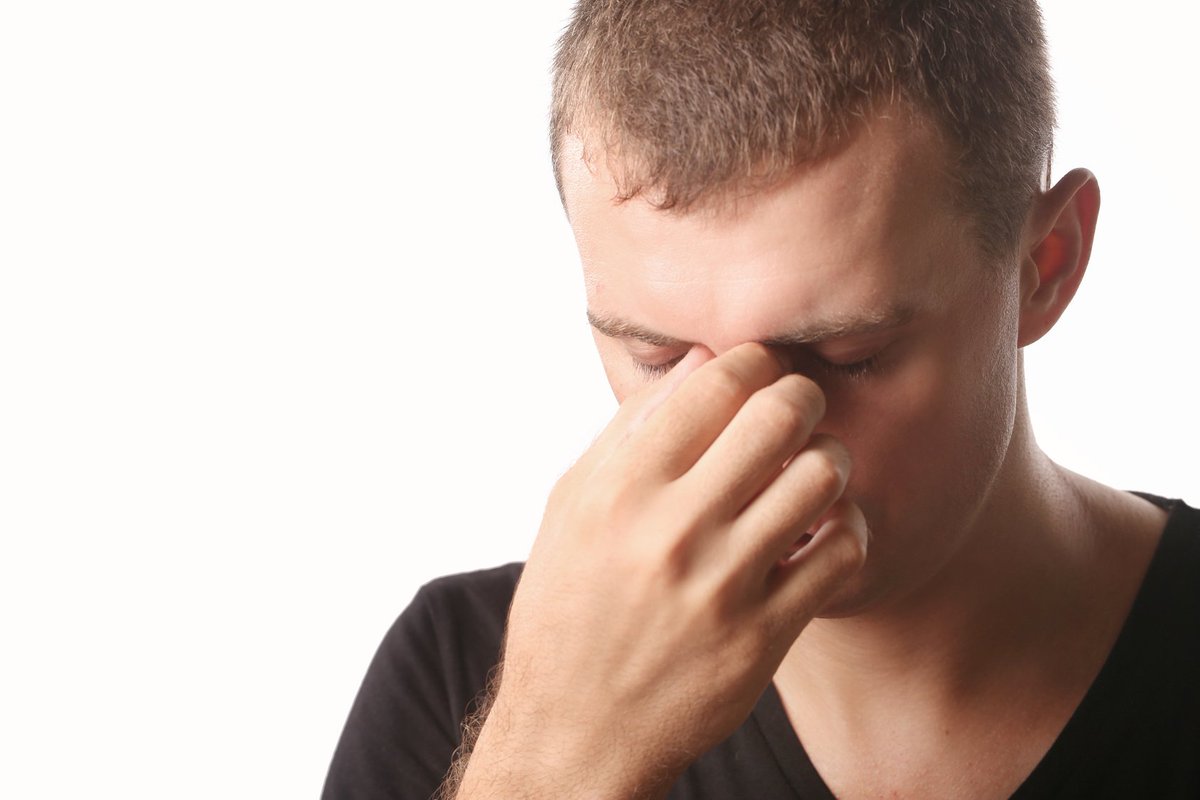
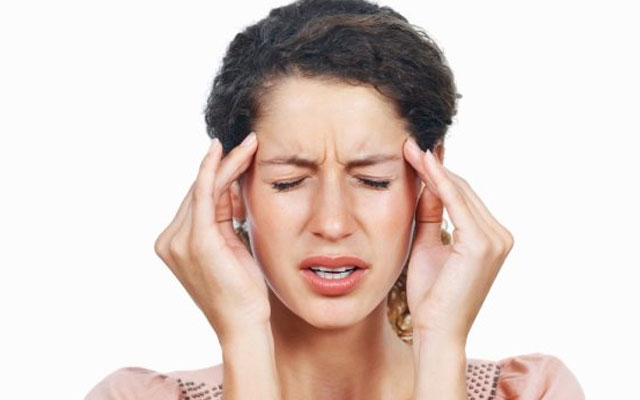


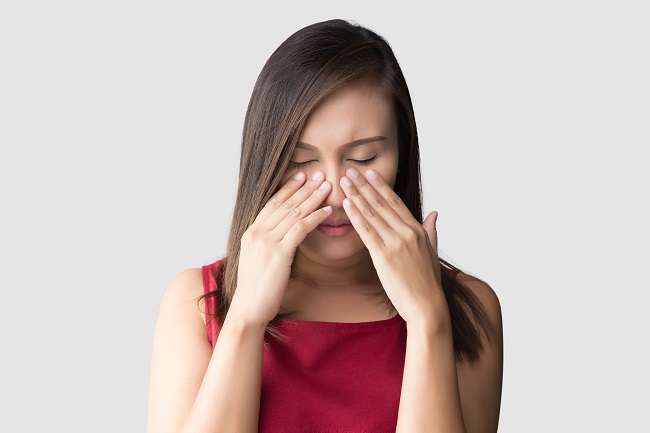
 The solution temperature should be between 38–40 ° C. For this procedure, solutions based on a wide variety of agents and drugs can be used.
The solution temperature should be between 38–40 ° C. For this procedure, solutions based on a wide variety of agents and drugs can be used.